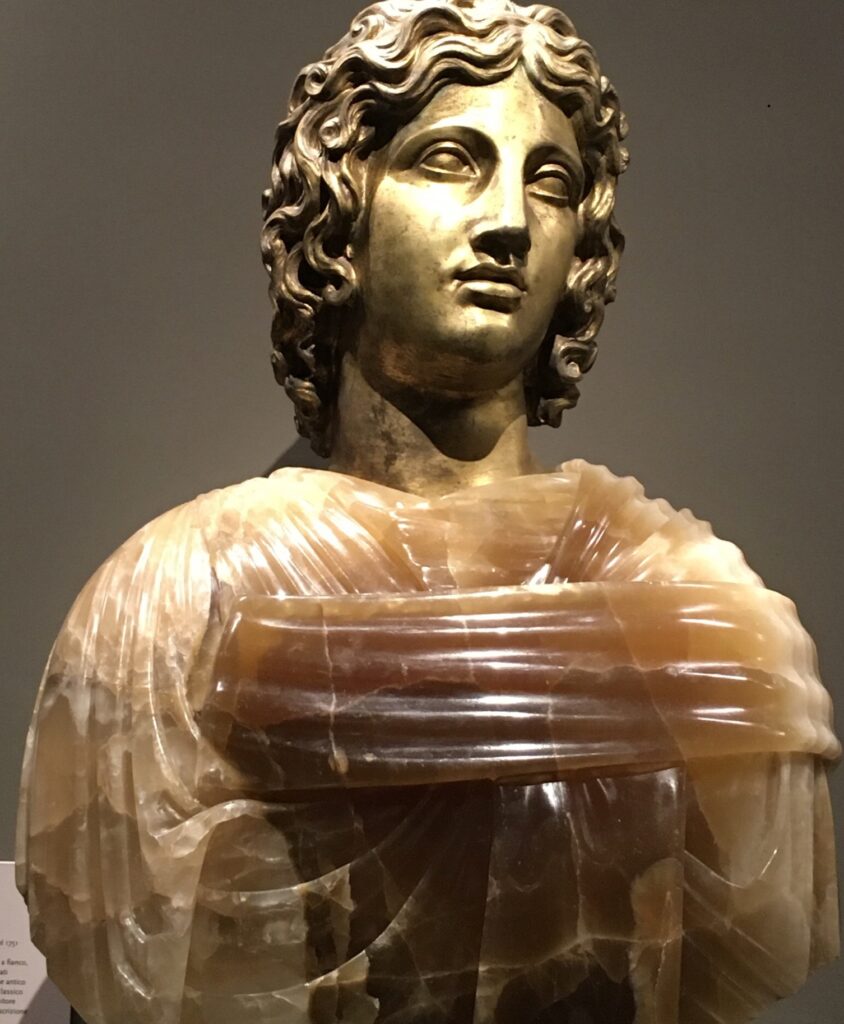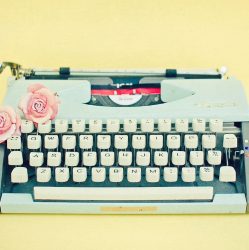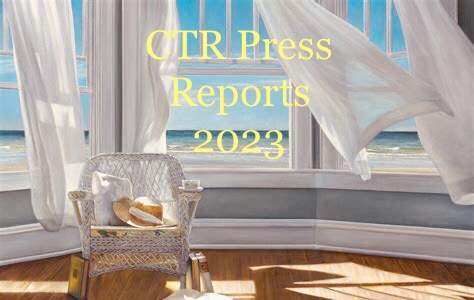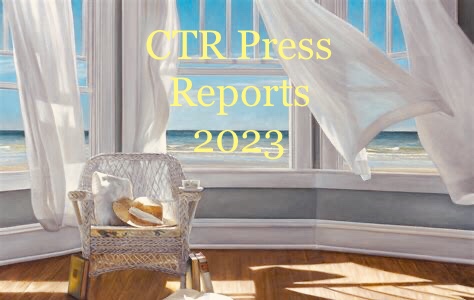
CTR Press Reports 2023:
December 2023:
December 2023:
Calculating Empires
Osservatorio Fondazione Prada
Milan, Italy
Fondazione Prada’s current exhibition is called “Calculating Empires”: it is about Technology and Power and of course: AI. Osservatorio is the center for the visual experimentation and research on collision between technology and culture. The curators created this exhibition by merging design, science and AI. The enormous installation makes the visitors to ponder about the AI and society.
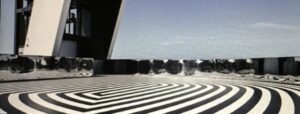
It is inspired by the large scale projects in the 20th century but developed to demonstrate anatomy of an AI system. This exhibition is a part of the permanent collection of MoMA in New York. The curator, Joler explained that generative artificial intelligence “has flooded global culture” and it has changed the way people research, write or create images. He emphasized the “hallucinations and misinformation “aspect of AI. Another curator, Crawford has focused on understanding of large data systems and AI in the contexts of history and politics. She has helped in setting up the AI Now institute at NYU. In her book Atlas of AI she has pointed out that AI has a huge “dehumanizing practice which most of us are unaware.”
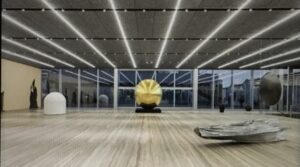
AI has already entered into the cycle of “birth, life and death” in our daily life. This exhibition highlights the intertwining factor of AI in Technology and Power. According to the curators, this exhibition intended to show the global impacts that have been developed throughout centuries by visualization of the complexities of the power and technology. The exhibition begins and ends with human elements entangled in AI system. The visitors enter the Map Room in a dark surroundings and they hear different vocals talking about communication and computation in an intense experience. It is somehow confusing experience exactly like AI itself. There are objects and books in the map room to demonstrate the complex relationships between computation and control. The final stage is a small library that encourages the visitors to write their impressions of the exhibition.
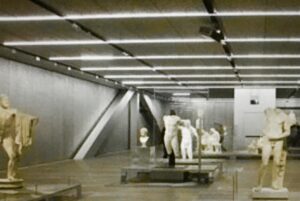
In March this year, more than 1000 technology leaders signed an open letter warning the deep risks of AI to humanity. They emphasized the issue with “neural network “, the mathematical system that learns skills by analyzing huge data. The AI critics warn about job killing aspect of AI and how it destroys human elements and create machine-like people. They specially warn the danger of allowing powerful AI systems to run their own codes.” (C)CTR Press

November 2023:
November 2023:
The de Young open 2023
The Fine Arts Museums of San Francisco,
de Young
San Francisco, California
The de Young open is a triennial art exhibition celebrating artworks by San Francisco Bay Area artists. This year about 8,000 artists each submitted an artwork and 12 art jurors chose about 900 artworks to display at the exhibition. The paintings were installed almost edge to edge. There was a variety of different styles, themes and subjects. And it was the goal of the jurors and curators to show the diverse viewpoints. The ambiance was pleasant and the visitors seemed to enjoy their time.
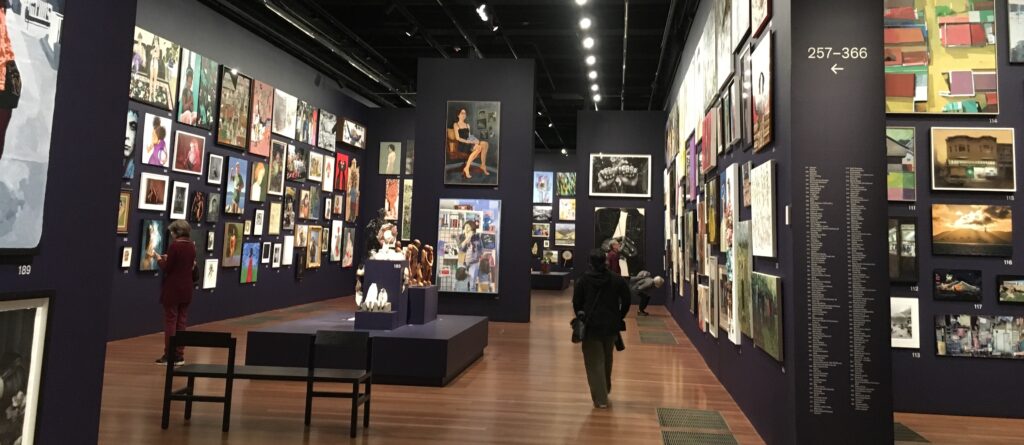
Claudia Cohen educated at the School of the Museum of Fine Arts in Boston and then moved to California and opened her studio in Sausalito. “Her style blends objective reality with the mythology”. Her painting (title: Nevermore) was based on the narrative poem by Edgar Allan Poe: The Raven that there is a constant repetition of the word “Nevermore”. “The Raven” by Poe depicts a raven’s visit to the narrator who is mourning the loss.
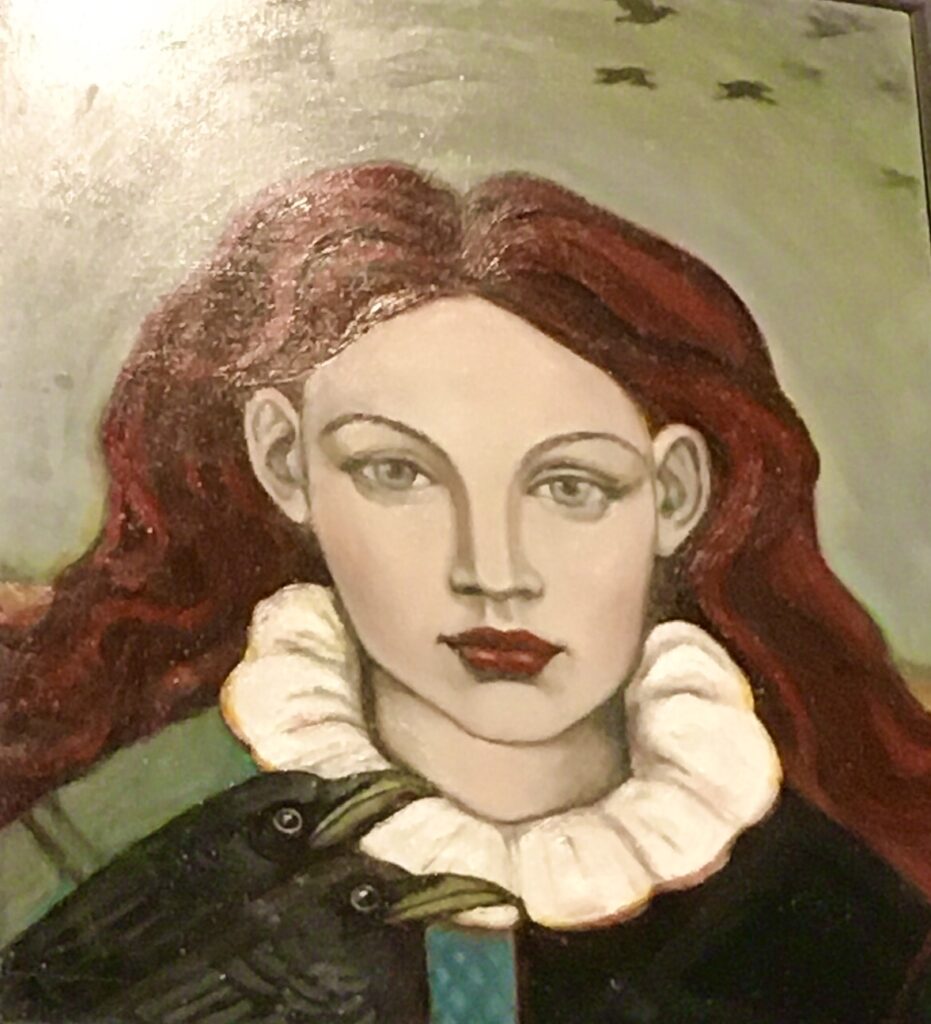
Terry Sauvé moved to San Francisco in 1996 and currently has an art studio in Santa Rosa. Her paintings demonstrate her deep connection with nature and she has a special skill to show the light that usually dominates her landscape paintings.
Raquel Serra Strom’s painting attracted the attention of two enthusiastic visitors and they were discussing the Mediterranean cooking that the painting implies.

The only visible information about each painting was a number associated with each one. Lack of the artists name and title of the painting was problematic for some viewers. The visitors were instructed to scan the code and download the app. Not everyone has access to the app or willing to download one. Ms Smith, a retired art teacher who was visiting the exhibition and eagerly discussing the theme of some paintings mentioned that the exhibition was interesting for the youngsters and somehow exhausting for some elderly people; because each time for finding information about each work they had to walk through the gallery and read the information on the separate walls. She didn’t know how to scan and preferred the traditional way of presenting information about the paintings. Another visitor Ms Locke, a photographer called her sister while visiting and showed her some paintings and urged her to visit the museum. She mentioned that she enjoyed the exhibition and felt more connected to the community. (C)CTR Press

October 2023:
October 16-19, 2023:
OCP Summit 2023
San Jose, California
The Open Compute Project (OCP) Summit is considered a unique platform in open IT Ecosystem development. The industry researchers, IT professionals, hardware engineers, the investors and tech enthusiasts from a variety of countries gather together to discuss the latest opportunities and challenges in the advancement of open hardware.
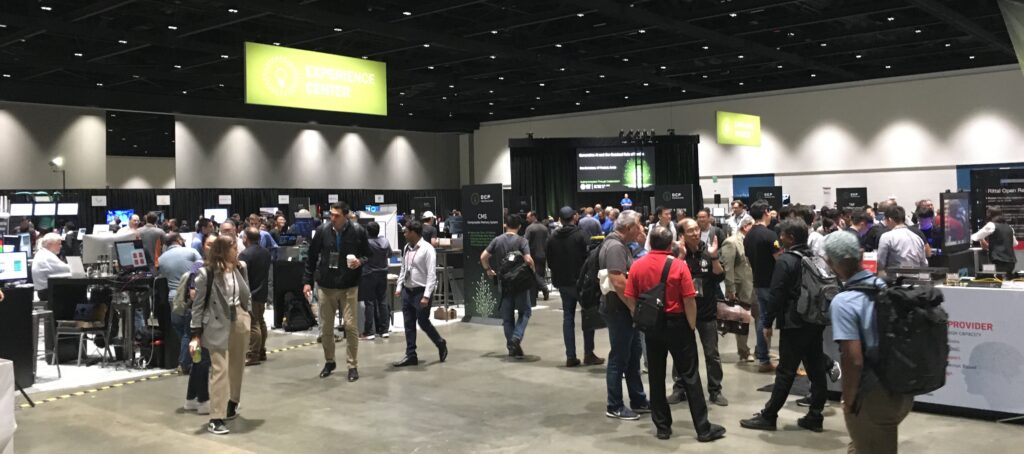
Many workshops and presentations were focused on discussing the emerging trends and the new opportunities for the global innovations. AI and scaling innovation through collaboration were the main topics of discussions. OCP project and special focus sessions discussed the latest projects and challenges in open source communities.
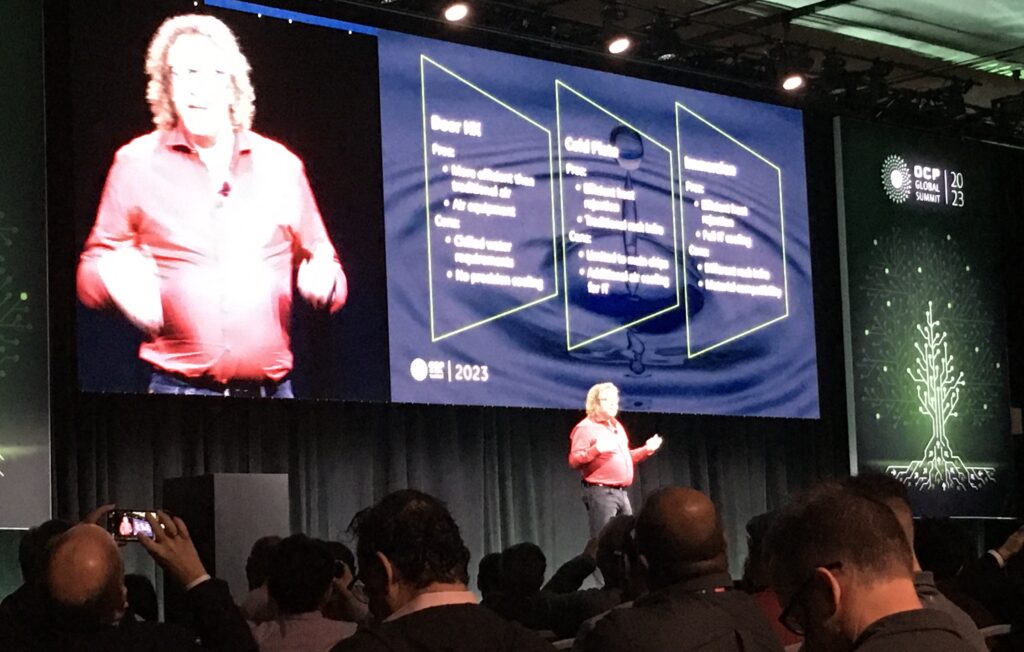
Keynote speakers discussed the open ecosystem, energy efficiency, cooling solution technology, and how to make AI platform more efficient and open. The speaker pointed out that open standards enable $10B open ecosystem. The next speaker discussed the increasing energy efficiency in the last 20 years. He emphasized that creating system innovations and improvements of density and efficiency should be the aim. He discussed the current data centers for AI and open verifiable benchmarks. The next keynote speaker talked about new chips impacts and the market for cooling technology. He pointed out that Cold plate technology is a part of solution. And he discussed the process of diversification of the environment according to the platform needs.
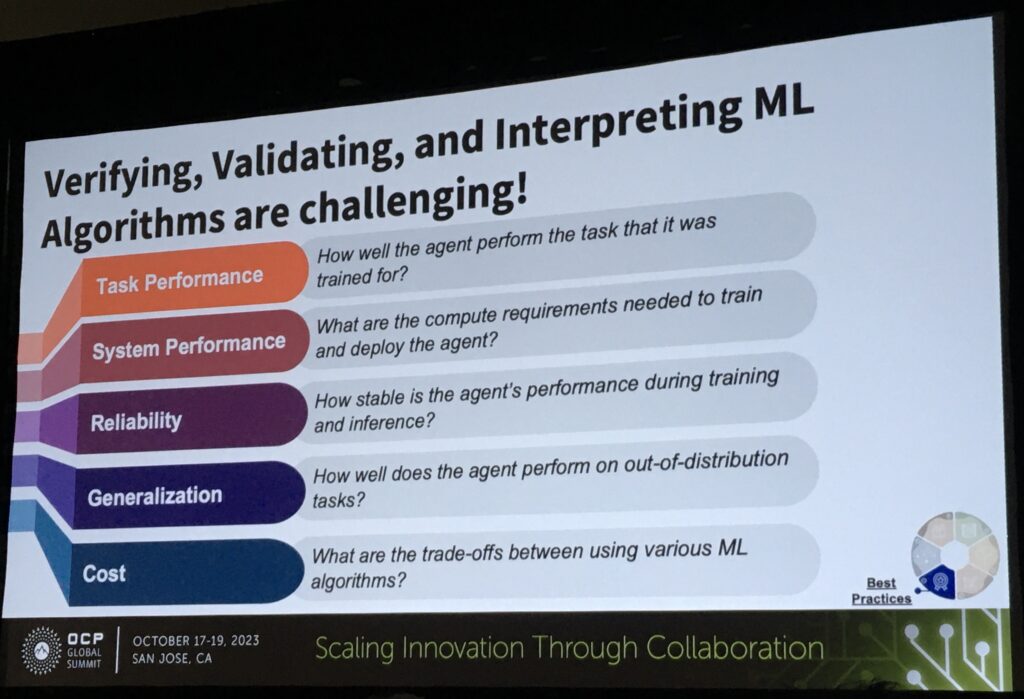
The speakers in the breakout sessions discussed building large language models, differentiation and specializations. The speaker pointed out that making AI platform more efficient and open should be the goal. The next presenter talked about data centers infrastructure solutions. He emphasized the importance of creating the infrastructure solutions that are compliant with OCP standards. He discussed the challenges of high performance power systems and superior cooling systems. The next presenter talked about the optimization of data centers performances. He pointed out that the developments in hardware performances are increasing heat generation and AI advancements causing higher computational workloads. He discussed the importance of the next generation cooling solutions.
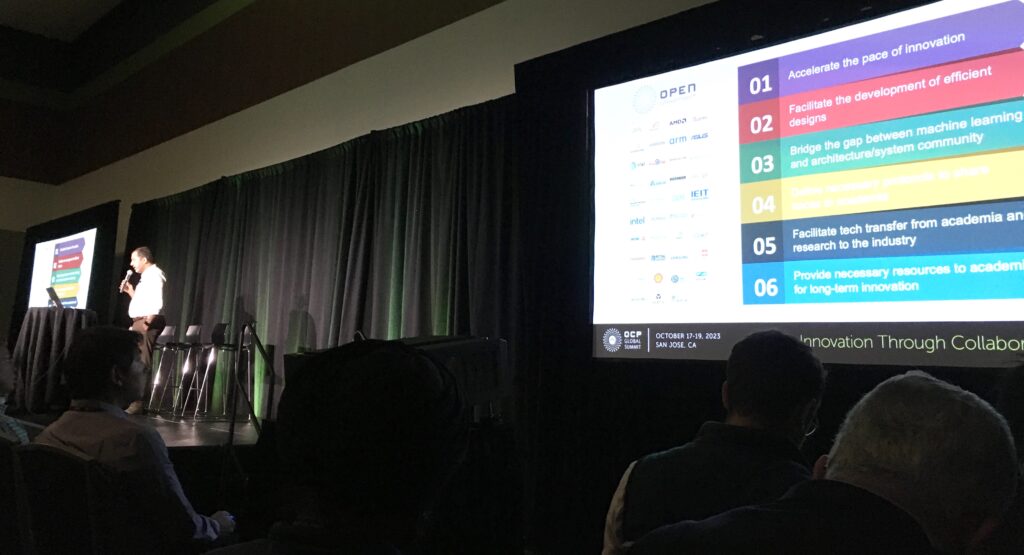
AI was the main topic of discussions. AI’s ability to gather and analyze enormous amounts of data from a variety of sources has some drawbacks. The privacy advocates warning about the data exploitation by third parties. The private data can be exploited by businesses for gaining marketing insights and being sold to other companies. AI uses the algorithms to predict the data that users are looking for on the internet. AI has increased its data gatherings with or without the individual’s consent. Since the scandal by Cambridge Analytica and Facebook in 2018, the users have become more aware of the privacy issues. Now with AI advancements, anyone can create and deploy AI powered solutions by using simple drag and drop process. But privacy issues still need to be addressed and fixed in order to make the growing usage more ethical and right. (C)CTR Press
September 2023:
September 19-21, 2023:
TechCrunch Disrupt Conference 2023
San Francisco, CA
Disrupt Conference is an original startup conference that focuses on founders and investors. The goal of conference is to discuss the future of tech and startups and the challenges they face. The startups, investors and tech enthusiasts gather together discuss the latest developments and the tech’s potential to change the world.
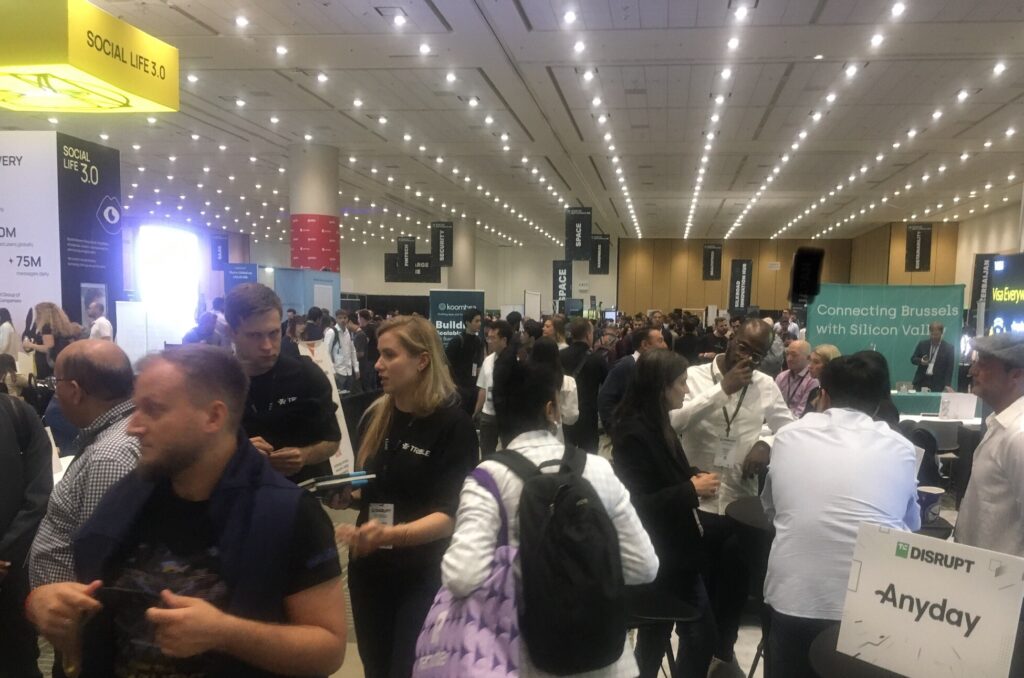
Eight new stages featuring the industry programming tracks: AI, Builders, FinTech, Hardware, SAAS and Security stages. Various sessions and presentations were focused on AI development, AI ethics, Future of AI, the next AI evolution, AI in the cloud, AI effects on the economy and some case studies.
The presenters also discussed the role of women in FinTech, building applications with AI and different approaches in dealing with data. The future of encrypted messaging and a variety of strategies to increase the revenue were discussed.

Privacy issues with AI is a major concern for many people. AI models usually pull data from a wide range of areas. But the consent of the the content creators is not made. These data can show up to other web’s queries. And it can create serious privacy problems. The data collection procedures, facial recognition systems, and biometric data are somehow controversial. The metadata collections has been done for years. Just a few AI algorithms are designed to be transparent about how and where the data are collected and stored. IoT sensors collect enormous amount of data and AI software usually take advantage of these processes. And privacy violations are always an issue. (C)CTR Press

September Special:
National Etruscan Museum of Villa Giulia
Rome, Italy

Museo Nazionale Etrusco is one of the hidden treasures in Rome. It is a must see destination for all the culture enthusiasts. This museum is housed in beautiful Villa Giulia in Rome, Italy. The museum’s main mission is promoting the culture of the Etruscans: the Etruscan civilization was at its height 500 BC and had considerable influence on the Romans. It has a rare collection of artifacts from that period. The museum was founded in 1889. It is surrounded by magnificent green and open spaces with a Renaissance architecture. The Villa Giulia constructed in 1553 by Pope Julius III. And Giorgio Vasari was one of the designers.

There are breathtaking frescos on the walls that attracts the attention of the visitors. In 1873, a magnificent tomb with span ceiling and burial beds was discovered. The ceiling and the walls are beautifully decorated. It shows the funeral bed of a wealthy couple and it signifies a ceremony dating back to 500 BC.

One of the masterpieces of the museum is Sarcofago degli Sposi, a tomb effigy. This significant artifact was made 530 BC in Etruscan coastal city. It is a gigantic cinerary urn. There is another magnificent artifact similar to this one and is on display at the Louvre Museum. Its style consists of a lower part in which the ashes were deposited.
There are special and unexplained hand gestures. The museum guide explained that they used to hold some objects in their hands and during the passage of time, and reassembling process of the artifact it had been reshaped. This impressive artifact fascinating all the viewers and making nearly all the visitors to stop by and take pictures of it and some began to discuss this rare artifact.
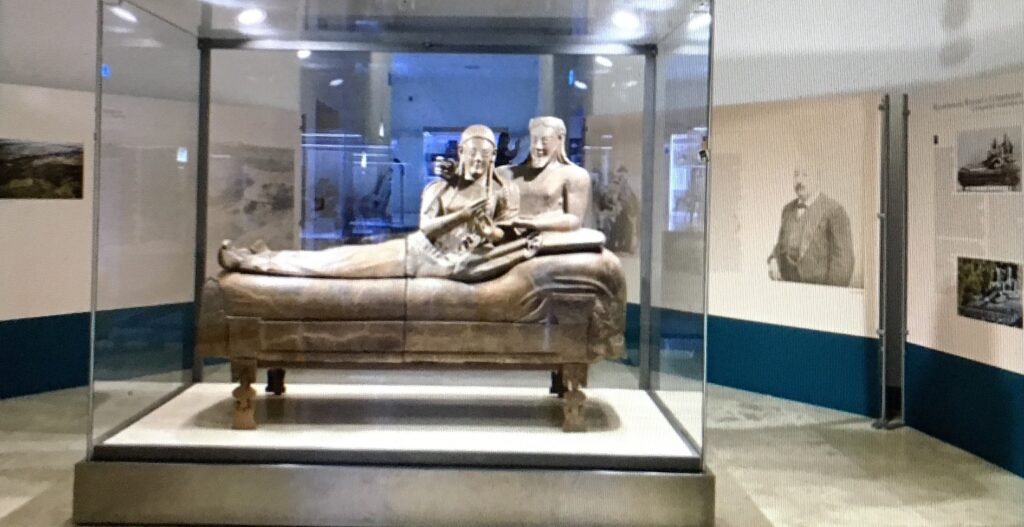
The linguists and language enthusiasts will find some interesting topic to discuss by visiting this museum. Some artifacts displaying the linguistic position of the Etruscan language. To understand Etruscan language is not easy and it has specific reasons: the short length of the surviving texts, the small number of glosses and finally the impossibility of the structure comparison with other languages. The linguists define it as a pre-Indo-European. The Etruscan texts making up the second largest epigraphic corpus in Italy after the Latin.
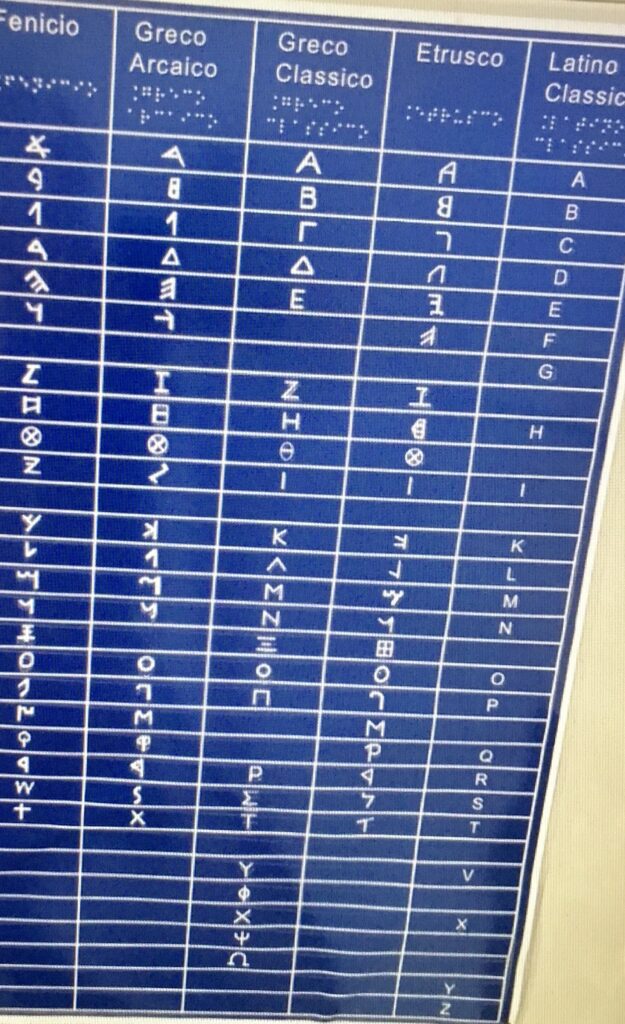
Among the artifacts there were several recovered looted ones that were illegally excavated and caused the irremediable damages for some. Thanks to the tireless efforts and leadership of an Assistant District Attorney in Manhattan, Matthew Bogdanos who is the chief of the Antiquities Trafficking Unit; a great man with high integrity who tirelessly goes after the art traffickers and recovers the looted and stolen arts and return them to the countries of origin. He has written an award winning book called “Thieves of Baghdad” about his investigation process into the looting of Iraq’s National Museum. For him no-one is above the law, he goes after anyone who is involved in the art theft, no matter how powerful and well connected they are. As the result of his efforts many artifacts have been returned to Italy and some are on display at this museum.(C)CTR Press
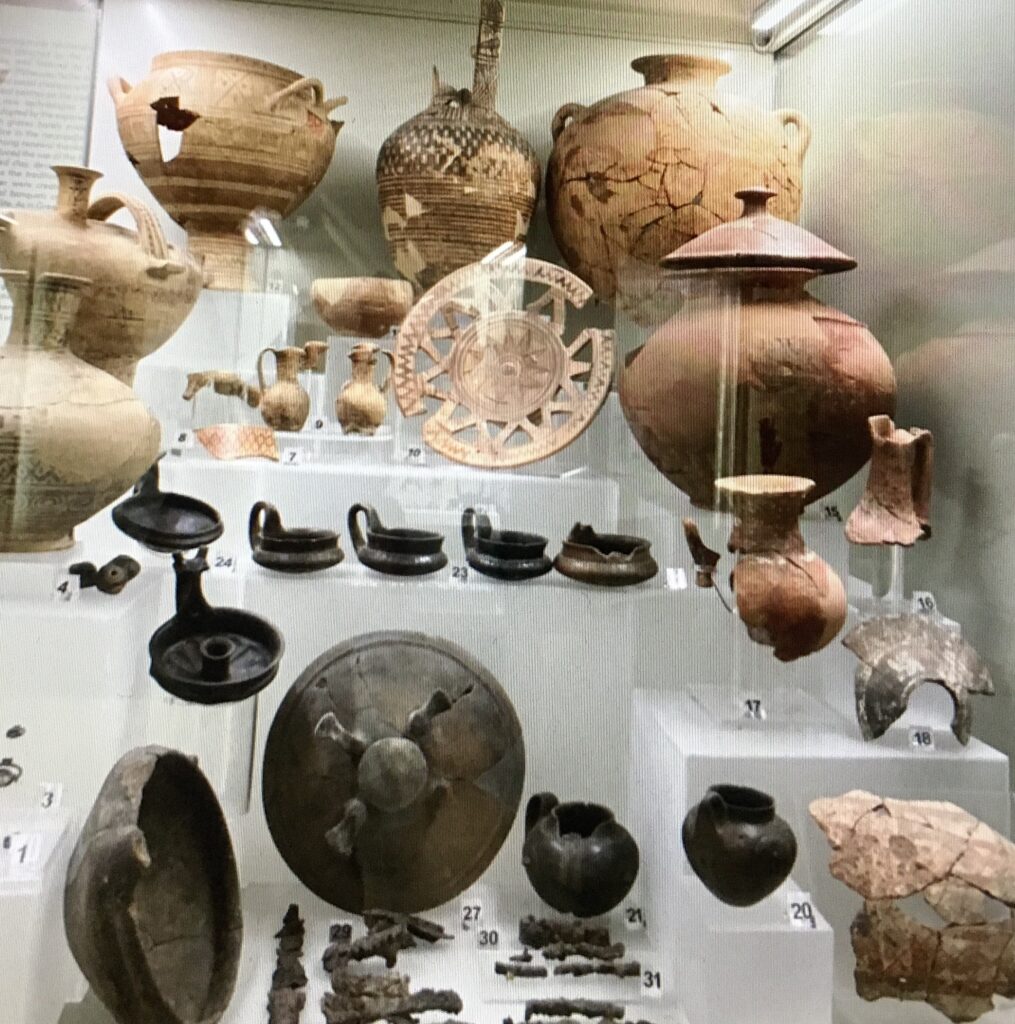
SUMMER 2023:
Summer 2023:
Palazzo Venezia National Museum
Vittoriano, and
Museo del Centrale del Risorgimento
Rome, Italy
Palazzo Venezia National Museum building is an ancient 15th century palatial home situated in the center of Rome. The architecture of the palace, the gardens, the historic reception halls, the sculptures, the monuments and all the paintings and artifacts take the visitors to a pleasant journey to the splendor of Italian Renaissance.
It has an interesting history too. In 1451, the mansion was owned by Cardinal Barbo. Most of the stones of the building was from Colosseum. In 1564, Pope Pius IV gave the palace to the Venetian embassy to Rome. During Mussolini time, he chose the place as his government and private residence. He knew the importance of the location, structure and especially the balcony of the building that directly overlooking the square. He used the balcony for delivering his speeches to the crowds gathering in the square.
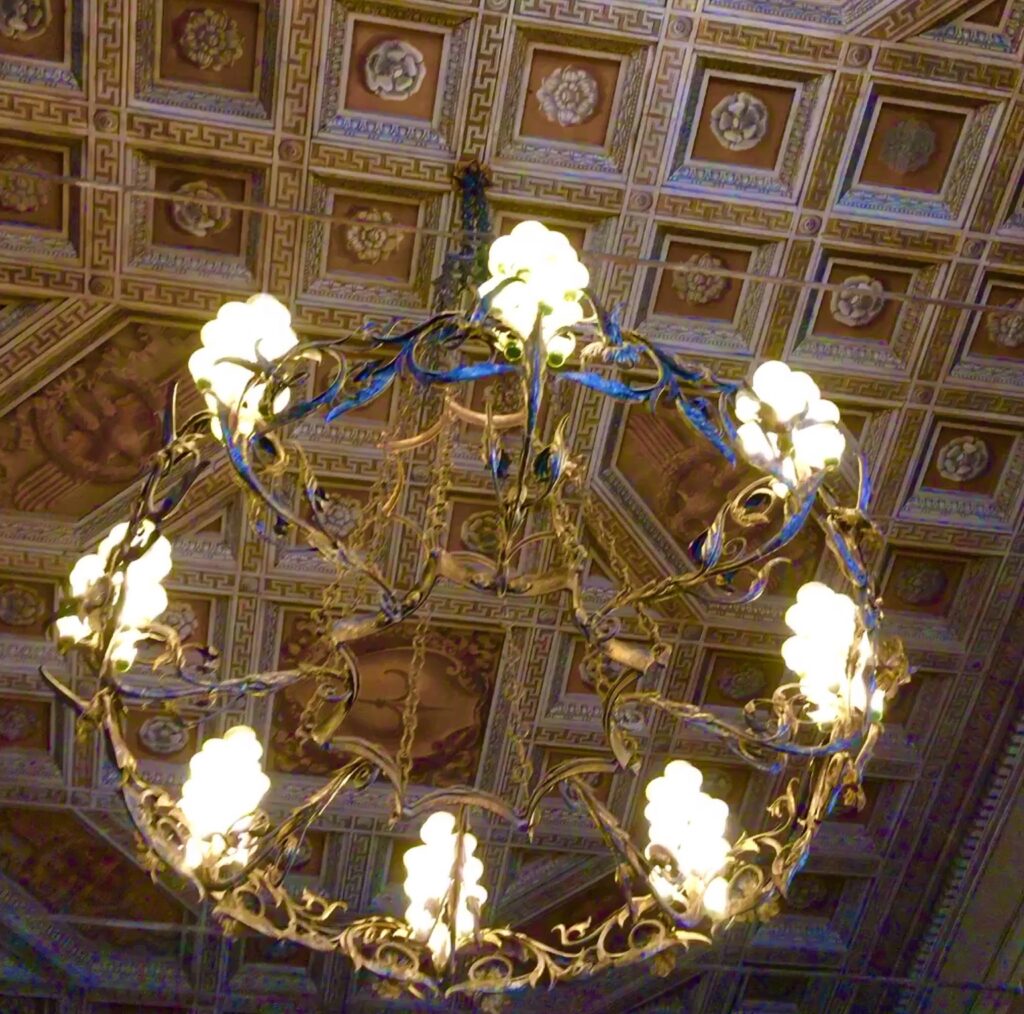
The crown jewel of the museum is the statue of San Michele (Saint Michael) defeating Satan by Michael Pacher. Pacher was a prominent painter and sculptor during 15th century. He had a unique style in his paintings and sculptures that influenced the artists of the period.
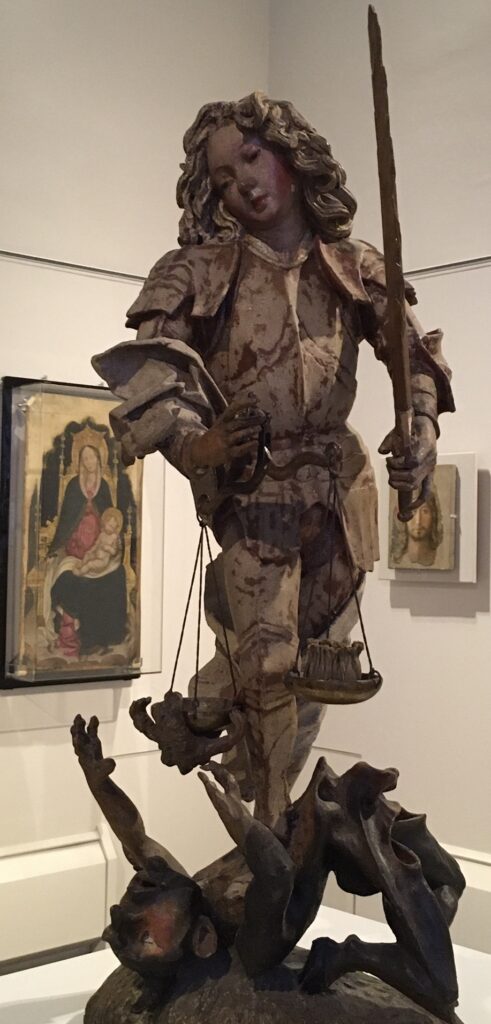
And De Giovanni Rettori sculpture is fascinating ; it makes the visitors to stop and ponder its significance.

The high ceiling of the historic reception halls are breathtaking. Each room has a unique marble patterns.

Vittoriano or the Victor Emmanuel II National Monument attracts the attention and admiration of the visitors. It features stairways, fountains and marble columns that demonstrate the splendor of Ancient Rome. The monument also holds the tomb of the Italian Unknown Soldier with an eternal flame.
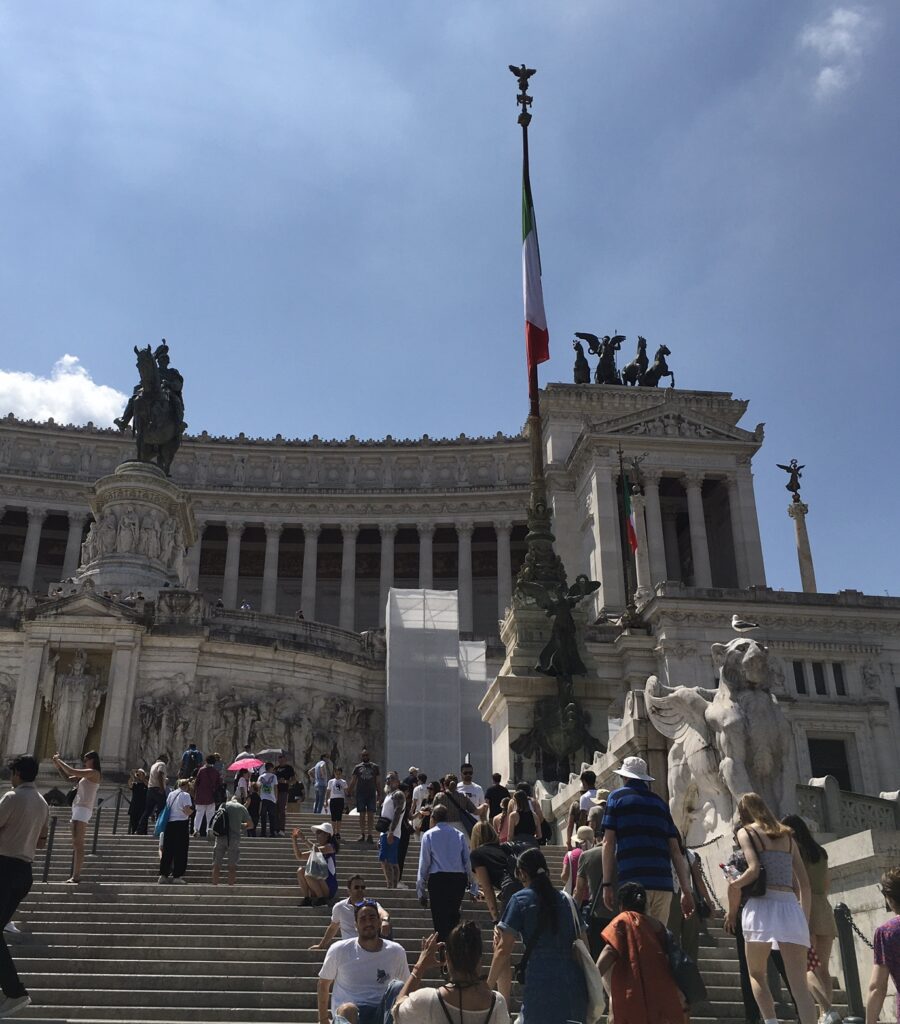
The Museum of the Risorgimento is dedicated to the Unification of Italy. It has many drawings about the French Revolution and Napoléon Bonaparte. Many pictures, documents and drawings about Giuseppe Garibaldi are on display. He significantly contributed to Italian unification.
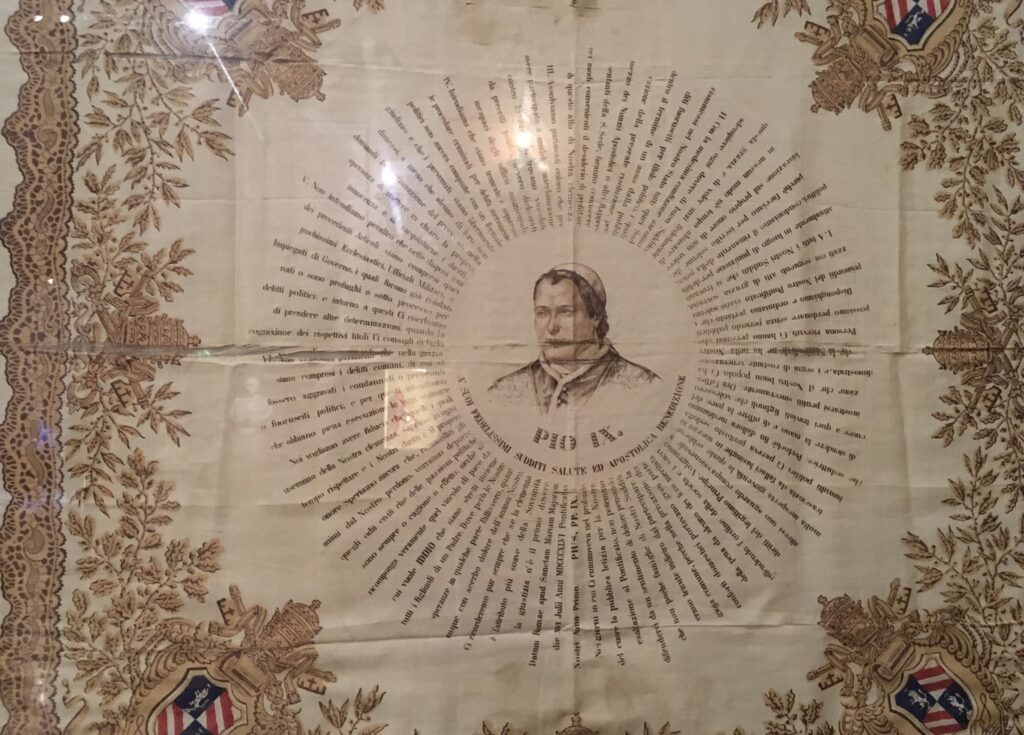
Visiting monuments, museums, churches and cultural events in Rome is the essential part of each visit. It helps visitors to gain knowledge and perspective on history, art and culture of the Ancient Rome. (C)CTR Press
June 2023:
June 2023
Museo Nazionale Romano
Rome, Italy
There are four national museums in different locations that are sites of Museo Nazionale Romano : Palazzo Altemps, The Baths of Diocletian, Crypta Balbi and Palazzo Massimo. They all have magnificent collections of antique artifacts and are must-see destinations for the art and culture enthusiasts.
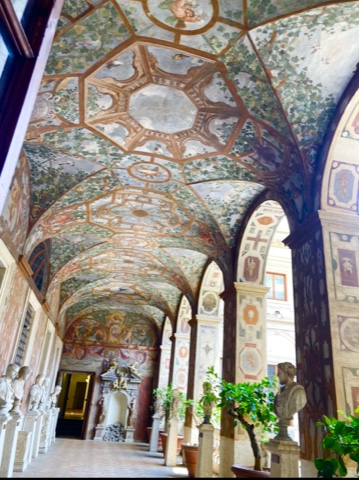
As soon as Rome became the capital of Italy in 1870, the calls for creation of new museums of antiquities in Rome began. As the result on March 1889, the National Roman Museum was established. Palazzo Altemps is one of the sites of Museo Nazionale Romano. This aristocratic building in the 16th century had amazing collections of the classical sculpture and in 1568 was purchased by Cardinal Altemps. He installed his rare collections of antiquities in the mansion and in 1982 Italian government acquired the Palazzo Altemps. In 1997 the museum was opened to the public. There are some rare statues from the 5th century BC made by Phidias. The interesting statues of Athena Parthenos, Hercules, queen of the Amazons, the capture of Cretan bull and Hercules victory attracting the attention and admiration of the viewers. Hercules symbolizing the victory over death and highlights the virtues of the deceased.
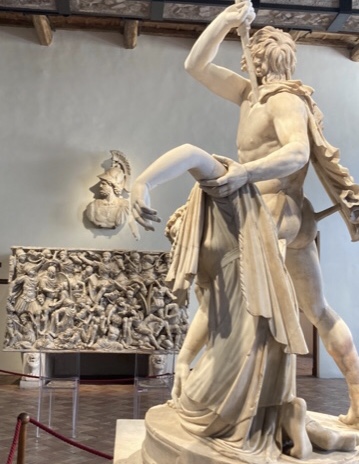
The visitors have a chance to view the iconic scene of the magnificent marble sculpture demonstrating the slaying of the bull by Mithras rising from a rock. It was created in the 3rd century AD and was discovered in 1964 in Tor Cervara.
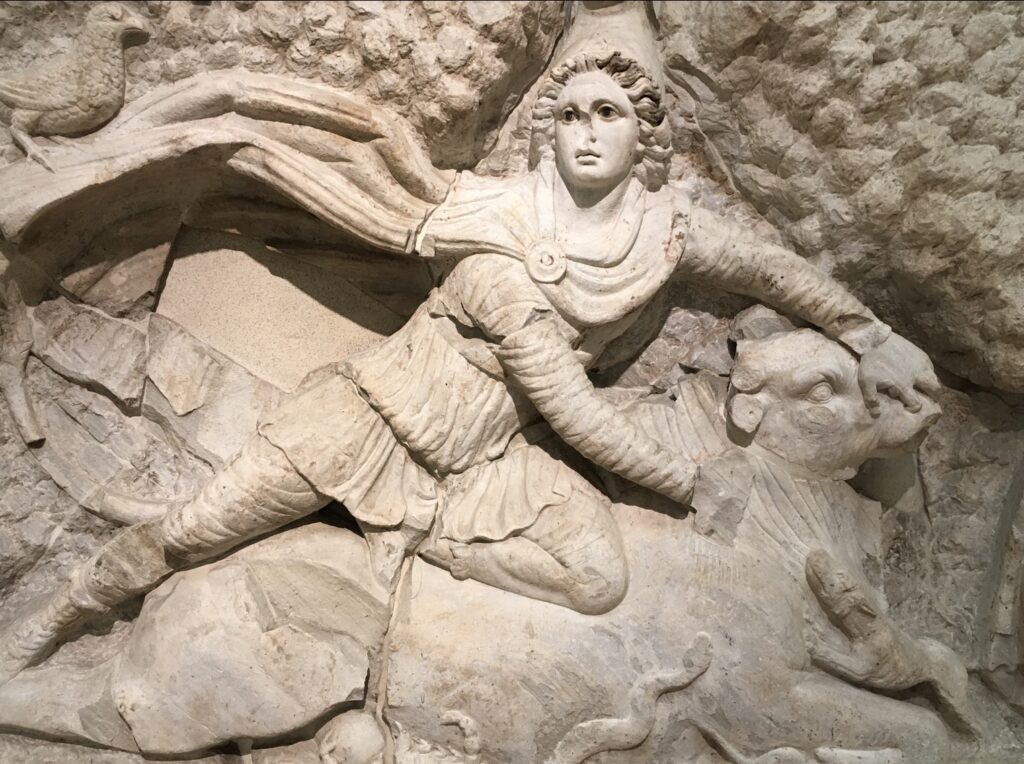
The Baths of Diocletian were built in 300 AD and extended over an area of 13 hectares. The Baths were abandoned until 1561, when Pope Pius IV ordered the construction of a church and Michelangelo designed the church and transformed the area. The Crypta Balbi has a unique environment and has considerably helped researchers to write the original history of the Roman city. Palazzo Massimo was built in 1883 by Massimo for the housing of the new Jesuit school and in 1981 was acquired by the Italian government to become one of the sites of Museo Nazionale Romano.
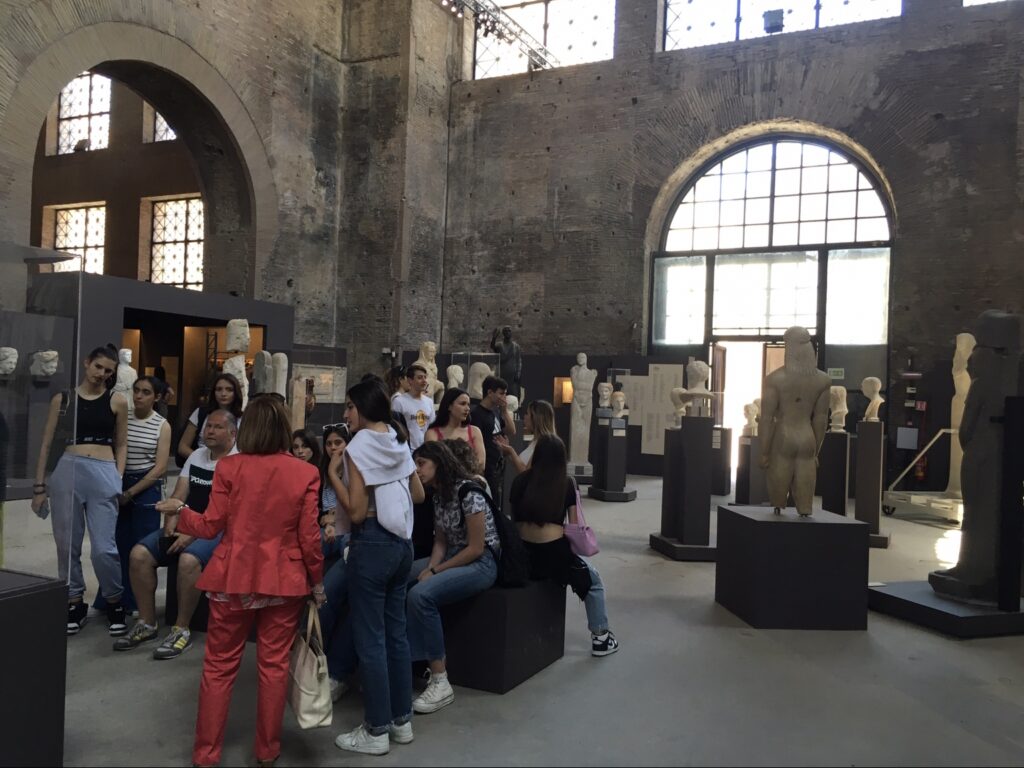
Each site has the rare and magnificent collections of antiquities that requires a lengthy visit that is both educational and enjoyable. (C)CTR Press

April & May 2023:
Siena Special
The Siena Cathedral Monumental Complex
&
Santa Maria Della Scala Museum
Siena , Italy
The Siena Cathedral Monumental Complex consists of many buildings: Cathedral di Santa Maria Assunta, Dell’opera Museum, Crypt, Baptistry and Porta del Cielo. The interior, the frescoes, the floor, the ceiling and the architectural walls and columns of this magnificent Cathedral is so beautiful that looks almost surreal. The façade of Siena Cathedral is one of the most beautiful and impressive features in the world. The Cathedral is a medieval church that completed in 1263. The visitors of the Cathedral have a chance to see the works by many artists of the period. The frescoes are breathtaking especially in the adjoining Piccolomini Library; they are designed by Raphael and painted by Pinturicchio. Each fresco tells a unique story.
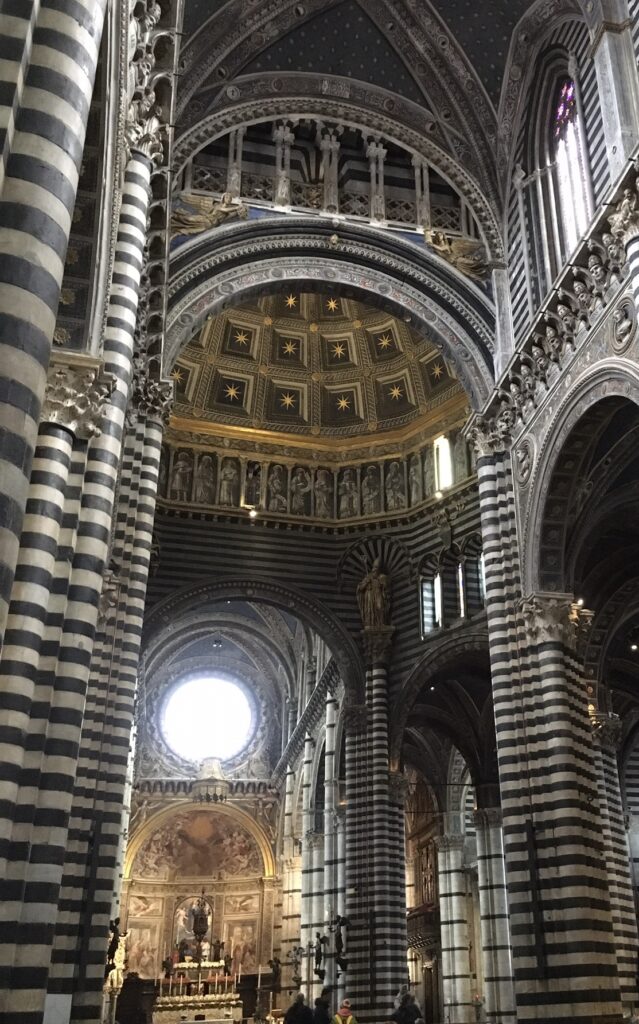
The marble mosaic floor that covering the floor of the Cathedral mainly represents the sibyls, allegories and virtues. They are really impressive and some of them are the works by Domenico di Pace Beccafumi. The statues by Donatello, Bernini and Michelangelo are attracting the attention and admiration of the viewers. The baptistry is located underneath of the Duomo and contains frescoes of 13th century. There is an amazing route up to the dome of the Cathedral with panoramic view. The visitors can experience a wonderful view after climbing lots of very narrow steps; the beautiful experience worths the challenge.
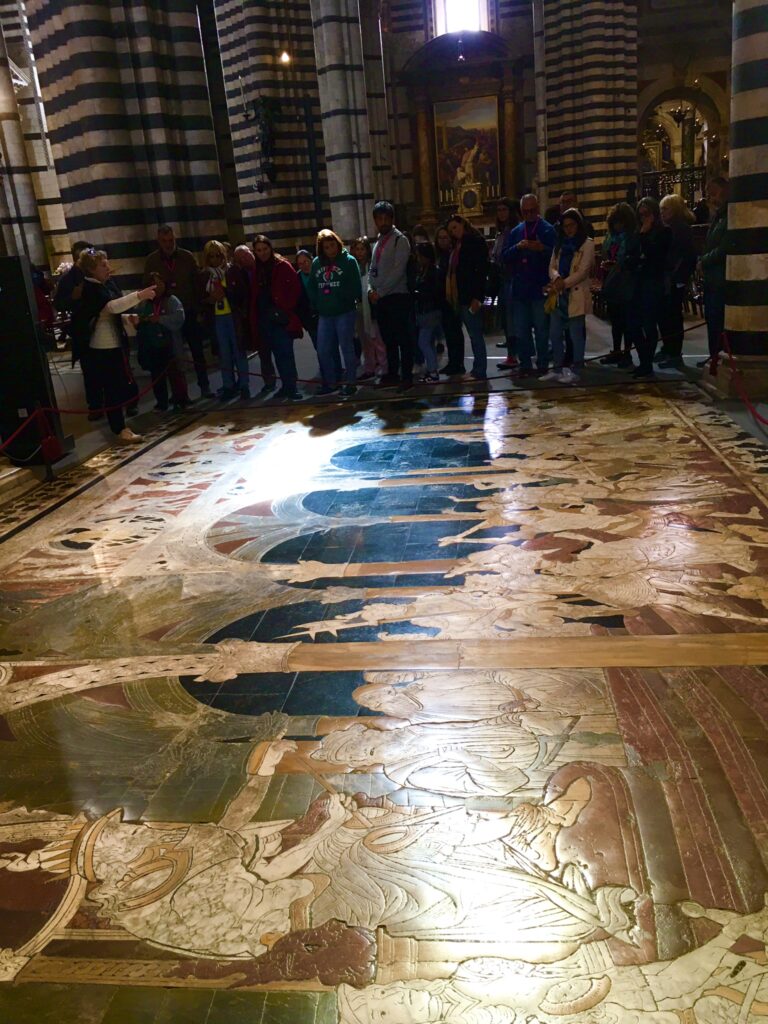
Giovanni Pisano provided the sculptures for the cathedral. He worked with his father on the pulpit. His sculptures have added to the charm and elegance of the Siena Cathedral. Located across the Piazza del Duomo is Santa Maria Della Scala Museum. Once it was a hospital caring for the poor and abandoned children then it became a museum displaying rare and impressive artworks. The fascinating frescoes by Pietro Lorenzetti and Simone Martini has made the museum unique.
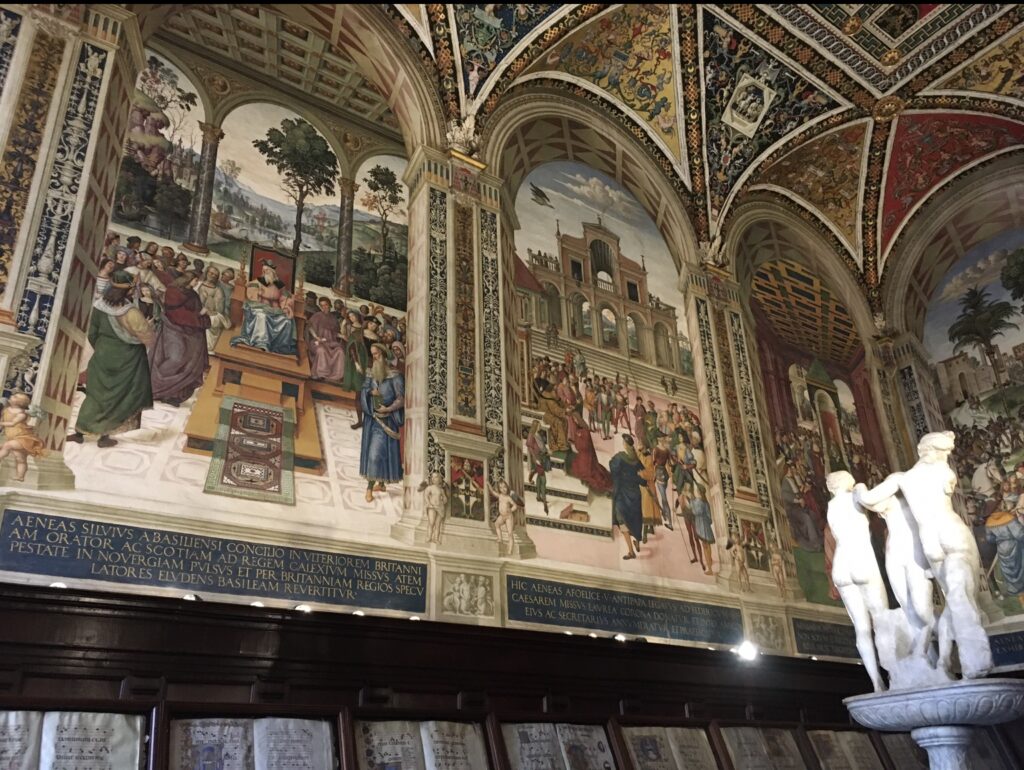
Piazza Duomo is a must-visit destination for the scholars, artists, historians, enthusiasts and the people who has the blessing of enjoying the elegant beauties of the artworks. The visitors will have an interesting journey to the centuries ago surrounded by the beautiful frescoes and artworks and walking on the marble floors with unique designs. Each piece of art tells a unique story of the past in a pleasant and everlasting manner. (C)CTR Press
April 5, 2023:
IONESCO SUITE
TEATRO DELLA PERGOLA
Florence, Italy
IONESCO SUITE was amazing: excellent script, highly professional director, exceptionally talented players, pleasant and intellectual ambience of Teatro Della Pergola, nice audience and above all a playwright such as Eugene Ionesco who was undoubtedly an expert on human nature. Ionesco Suite was in French language with Italian translation appearing on the board. This fantastic play was a production by Théâtre de la Ville- Paris.
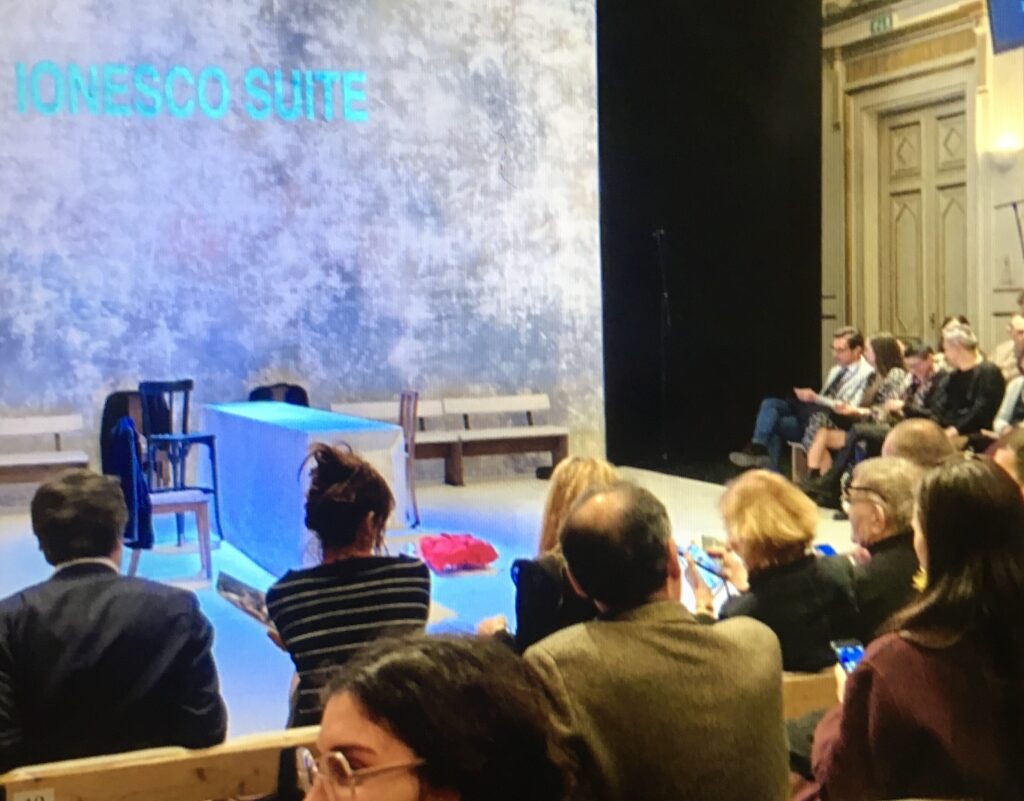
There was also a plus session, a lecture by Fernando Arrabal Terán, a ninety years old Spanish playwright and novelist. He was passionate about his works and works by Ionesco and victor Hugo. He has published over 100 plays. In 1954 he went to Paris to attend a performance of Bertolt Brecht’s play and he stayed there. He is a painter and an avid chess player too. When his poem about his father was read he got emotional and visibly shaken. His father was a political prisoner who had been transferred to a mental hospital and then one day in the middle of winter he was disappeared without any trace and he was never seen again. Arrabal’s speech was in Spanish language with an Italian simultaneous translation.

Eugene Ionesco was a Romanian-French playwright who wrote mainly in French. He was one of the pioneers of the so called “Theatre of Absurd “. He didn’t like the name and believed the literary critics misunderstood his works. He was in fact a realist playwright who felt deeply like Camus and Beckett and described his characters in brutally honest manners.

IONESCO SUITE is the combination of five plays by Ionesco. The Paris-based company, Théâtre de la Ville did a wonderful job of recreating this play. The talented and well directed players looked directly into the eyes of the audience and conveyed their messages. It was so powerful as if they had kept a mirror of the people’s souls and showing them what is going on. On the surface it seemed funny but it had extraordinary depths to it that touched the hearts and minds of the audience. The players facial expressions were powerful; they talked through their faces and body movements. Even those attendees who didn’t know French and had to read the subtitles and as the result missed some powerful facial expressions, appreciated the play by long and passionate applauses at the end of the play.
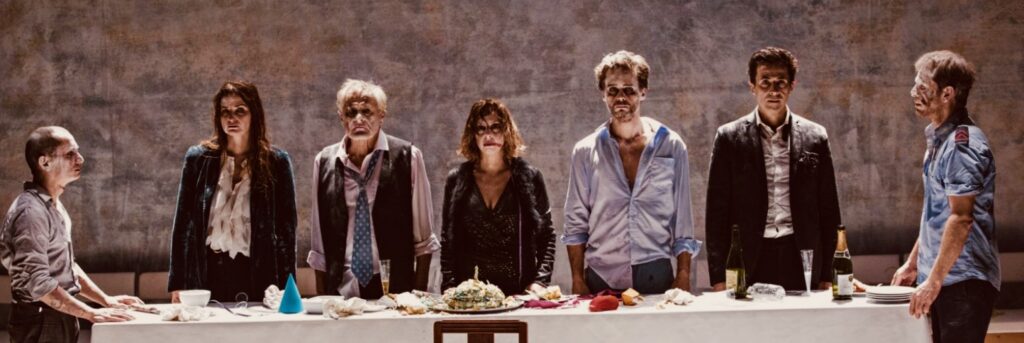
Emmanuel Demarcy- Mota directed the piece and his choice of players such as Sandra Faure, Charles-Roger Bouer, Antonin Chalon and Jauris Casanova is perfect. Since 2013, they have had the global tours and performed in a variety of cities such as Berlin, Athens, Chicago, New York, Rio de Janeiro, Moscow, and Florence. This play motivated some members of the audience to have a trip to Paris and see more plays from Théâtre de la Ville.(C)CTR Press
April 2023:
Santa Maria Novella
Florence, Italy
Santa Maria Novella is a must see destination for all cultures enthusiasts and especially for those who are interested in Renaissance paintings and architecture. It has some of the rarest and most beautiful frescoes. The ambiance is amazing and it takes the visitors to a great journey to the history. It has an interesting story too. In 1219, twelve Dominican friars originally from Bologna and led by Fra Giovanni started to live there.
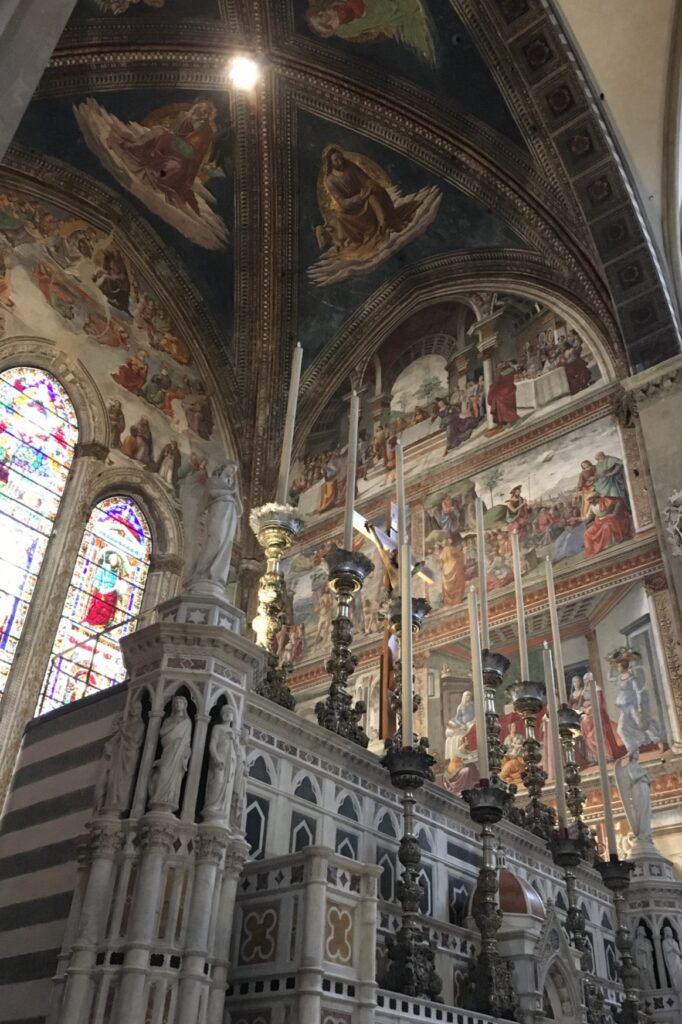
Later the chapel contained series of the most famous frescoes and masterpieces painted by Giotto, Domenico Ghirlandaio, Alessandro Allori, Giovanni Maria Butteri, Botticelli, Bronzino, Duccio, Ghiberti, Lippi, Masaccio, Uccello, Santi di Tito, Vasari, Gamberucci and Bonaiuto. It is a rare opportunity to view all these masterpieces in one place.
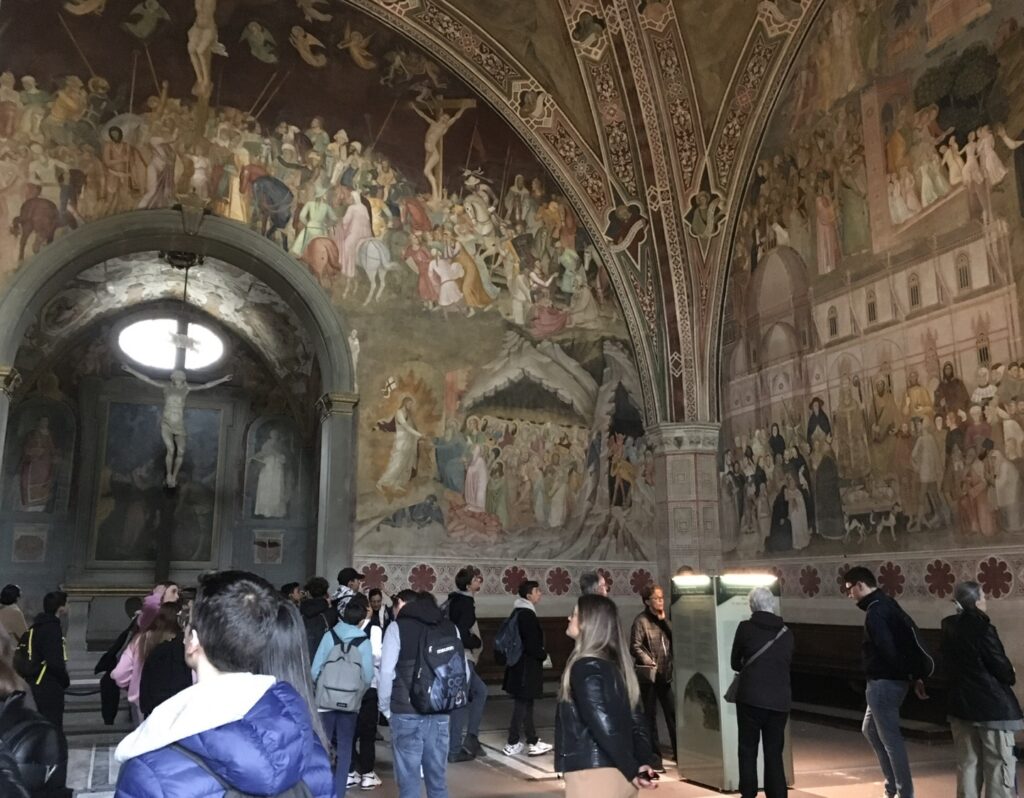
In 1368, Andrea di Bonaiuto frescoed the Spanish Chapel. This room is breathtaking with portrayals of Dante and Giotto on the same wall. Andrea di Bonaiuto, was called Andrea da Firenze. Also the visitors have a chance to see paintings from Allori on the back wall of the chapel. It is the portrayal of the great Dominican Doctor of Church illuminated by the spirit of Wisdom and dominated the sciences.

The crown jewel of the museum is the The Last Supper by Alessandro Allori (Florence 1535-1607). He completed the painting of The Last Supper in 1584 and continued painting many frescoes. In 1808, during the Napoleonic time in Italy it was rediscovered. In 1983, the Refectory became a museum and rare masterpieces started to be on display for the public.
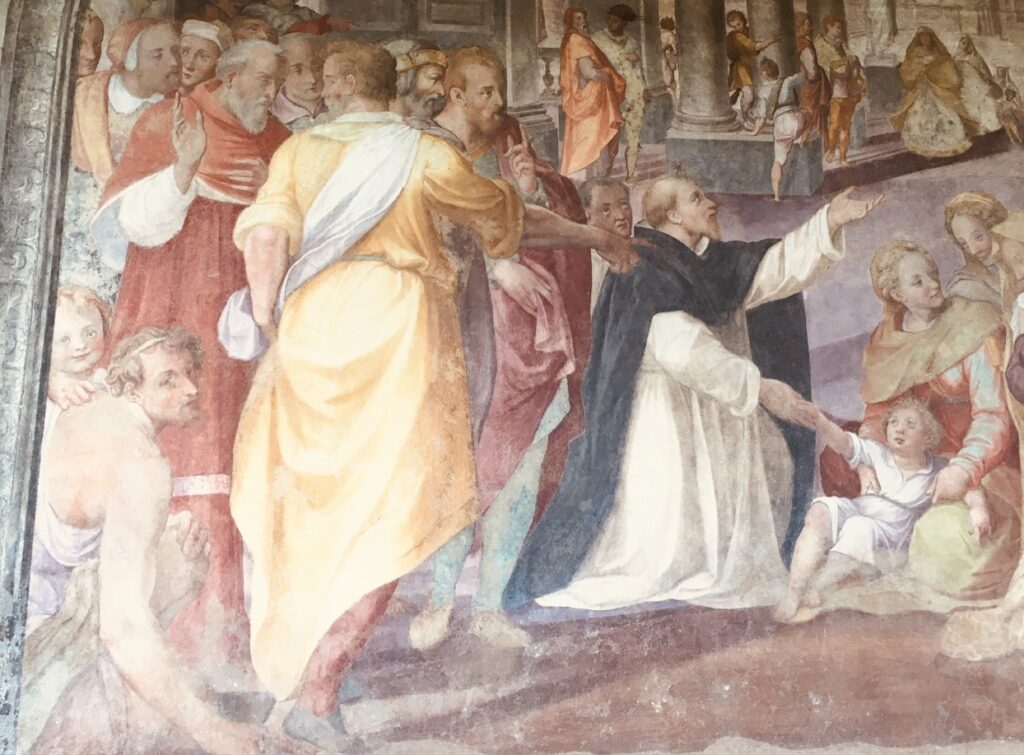
The beautiful frescoes by Giovanni Maria Butteri , a native of Florence and a pupil of Alessandro Allori are attracting the attention and admiration of the visitors. The facial expressions in his paintings are rare and magnificent. It demonstrates the deep understanding of the painter and how he was aware of the human emotions and how they act in the different situations.
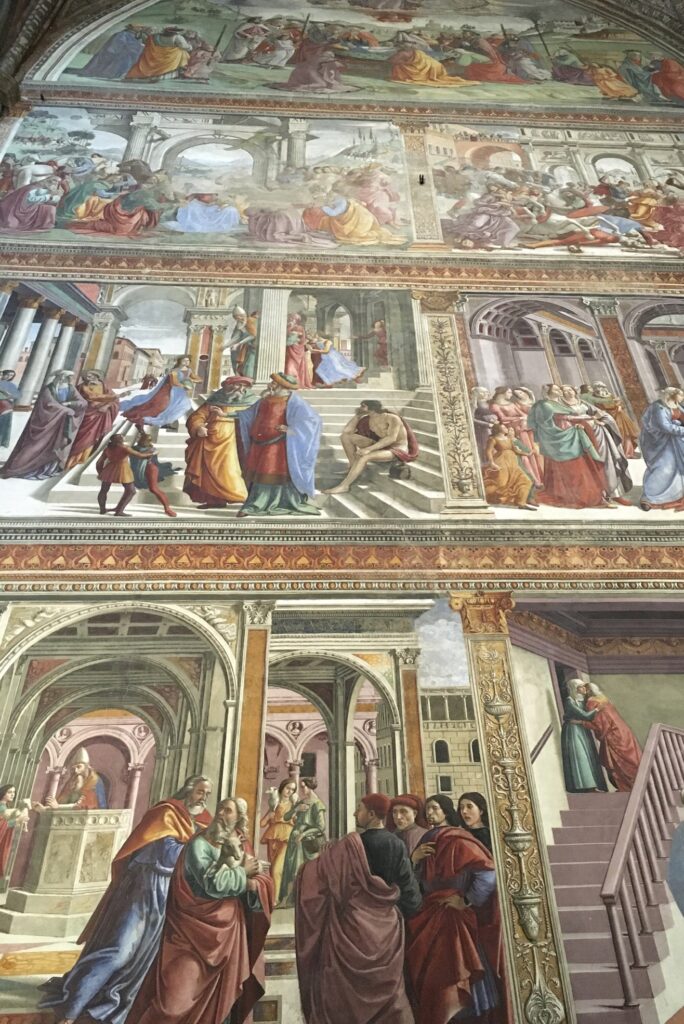
Domenico Ghirlandaio paintings such as The Massacre of Innocents are on display in the church, Cappella Maggiore makes the viewers think of the human nature and how through passage of time hasn’t changed much. The composition of colors in these frescoes are outstanding and each color signifies a different type of emotion and expression. Each fresco represents an insight that is unique to each painter. After viewing all these masterpieces that elevate the taste and criteria of each visitor, it wouldn’t be easy to visit a modern art exhibition and connect because it may seem too superficial. (C)CTR Press
March 2023:
March 2023:
Sargent & Spain
Exhibition
Legion of Honor Museum
San Francisco, California
The visitors to the Legion of Honor museum have a chance to view the fantastic collection of paintings by talented John Singer Sargent. Sargent created thousands of paintings both oil paintings and watercolors during his worldwide travels. He was born in Florence, Italy in 1856 to American parents. He spent most of his time in France, Italy, Spain and the United States.
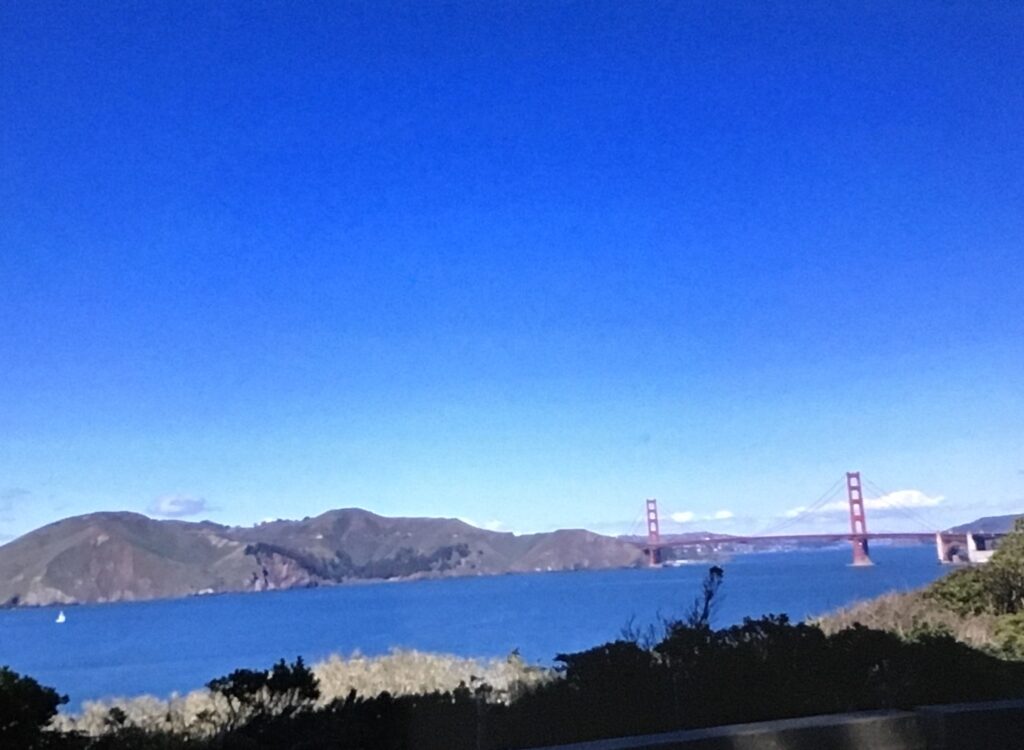
During the 1880s Sargent was based in Paris but he moved regularly to visit the monuments, churches, museums and galleries in Italy, Spain and Switzerland. Sargent’s parents both had the artistic talent and were free spirited. They believe that Sargent can learn more from traveling around the Europe and visiting museums, galleries and churches than attending the school. Sargent was fluent in English, French, Italian, Spanish and German languages. He was very well read and had a great knowledge and understanding of arts, literature and music. He used to spend most of his time in self-study and drawing in the museums.

Sargent traveled to Spain frequently and was inspired by Spanish art, architecture, people and traditions. He took many photographs during his trips and brought them to his studio. He was very impressed by the Spanish painters such as El Greco, Velàzquez and Goya. In 1895, Sargent registered as a copyist at the Museo del Prado.
He was fascinated by Spanish music and dances. He depicted Flamenco in his paintings. Sargent saw the Spanish dancer, Carmencita and painted her full length portrait without a commission. The visitors too were enchanted by this painting. The highlight of yellow color in this painting is exceptional and very pleasing to the eyes of the viewers.
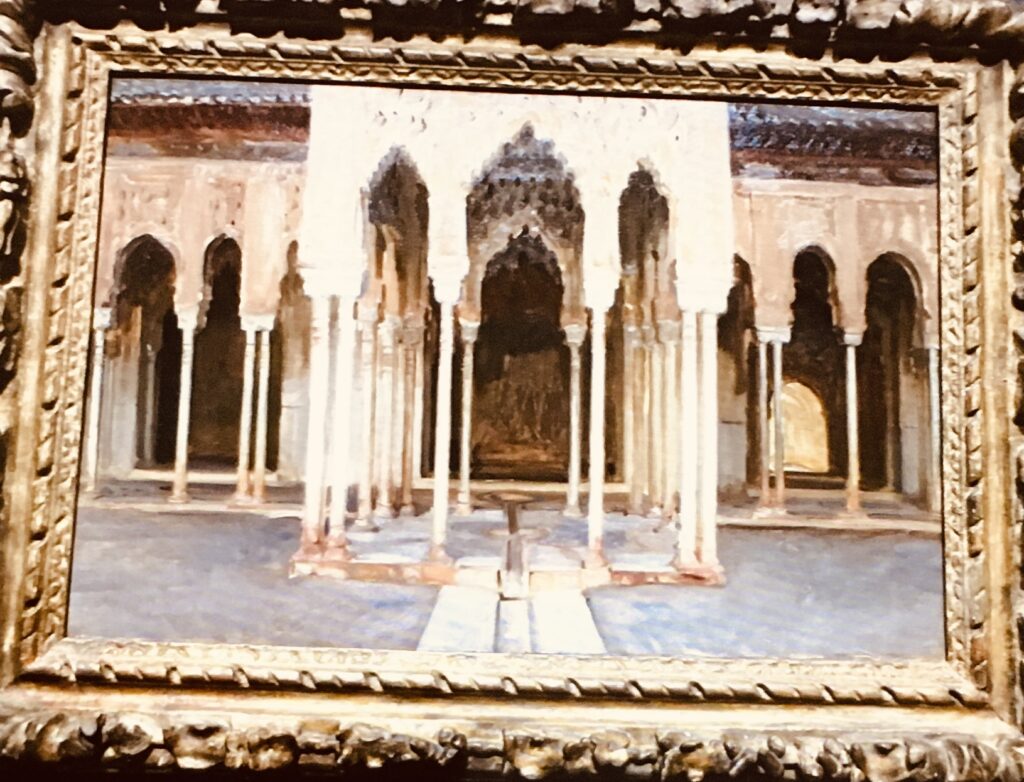
Then Sargent shifted his focus towards the architecture, landscape and the local people. He depicted the east portico of the Court of the Lions and painted the golden light on the delicate columns and walls. He also painted the beautiful pomegranate gardens nearby that blurs “the line between landscape and still life.”
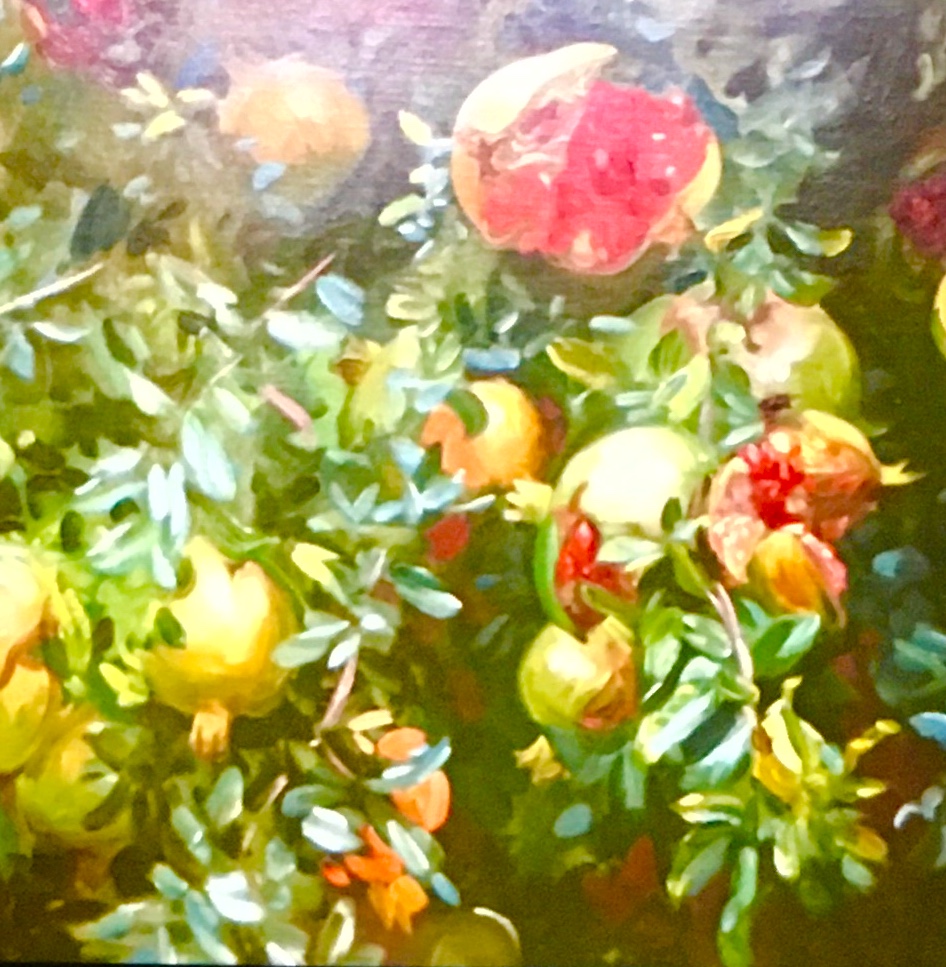
Henry James encouraged Sargent to visit London, but the English critics at first were not so impressed with his paintings; at the same time he had huge successes in France, Italy, Spain and the US. Sargent was not much interested in the modern art and used to say “Ingres, Raphael and El Greco are what I like.” The visitors leave the museum with a pleasant and long lasting impression of Sargent & his art. (C)CTR Press
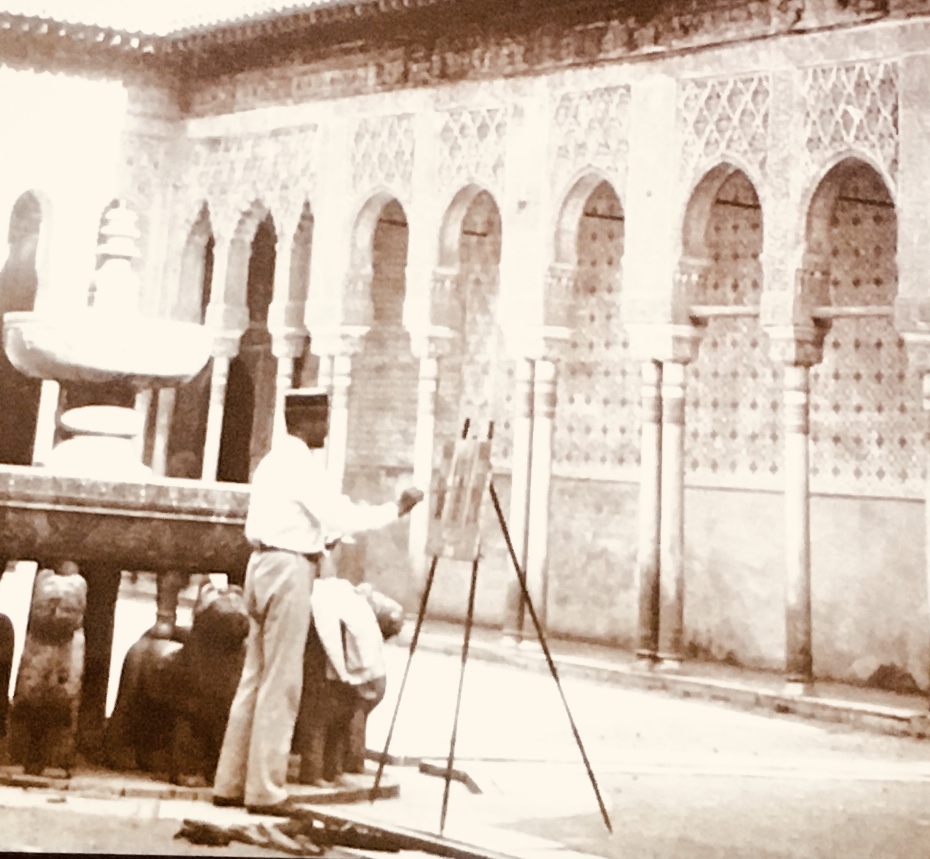
February 2023:
January 30- February 1, 2023:
The Media Insights Conference 2023
San Diego, California
The Media Insights Conference’s goal is uniting the industry for navigating the contents and discussing new challenges and opportunities for the insightful decision making. The conference participants were mainly the executives and experts from the leading media companies.
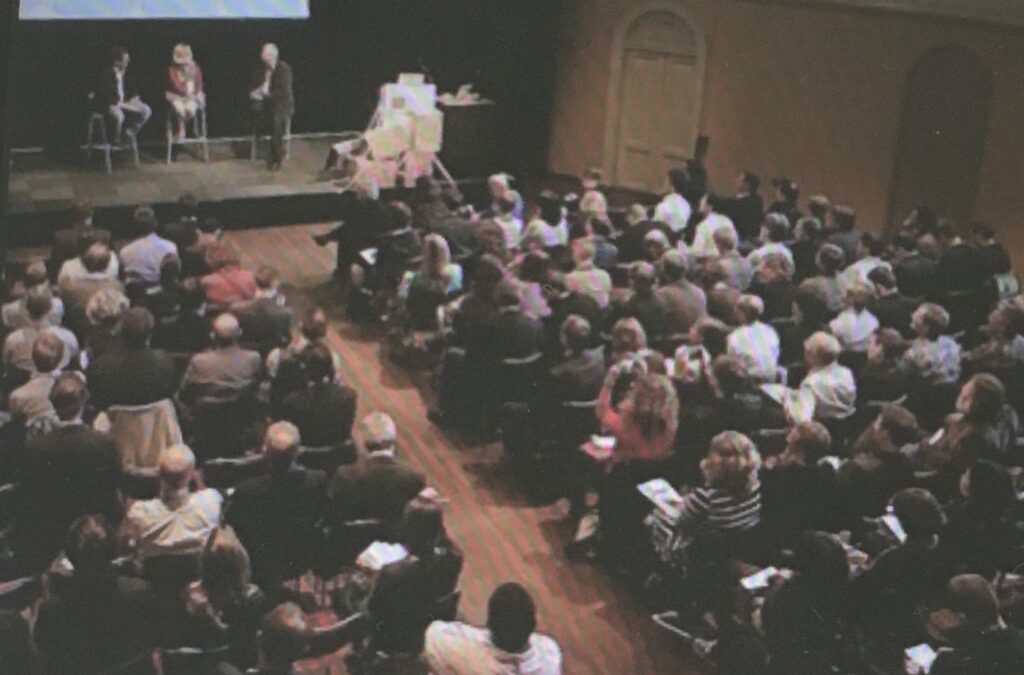
The keynote speaker discussed how to turn the chaos into an opportunity. He talked about the post pandemic period and the lessons learned from the most recent pandemic and the early twentieth century pandemics. The speaker emphasized on the business lessons and discovering new opportunities in various difficult situations. He explained the new world order, following a new path and discovering the true window of opportunities after passing through pandemic period. The speaker pointed out that new innovations and strategic shifts are the areas that emerging from the crises.
The next keynote speaker too talked about the post Covid times. The presenter discussed consumers’ new habits and expectations and how they affect the current business models and opening new doors of opportunity.
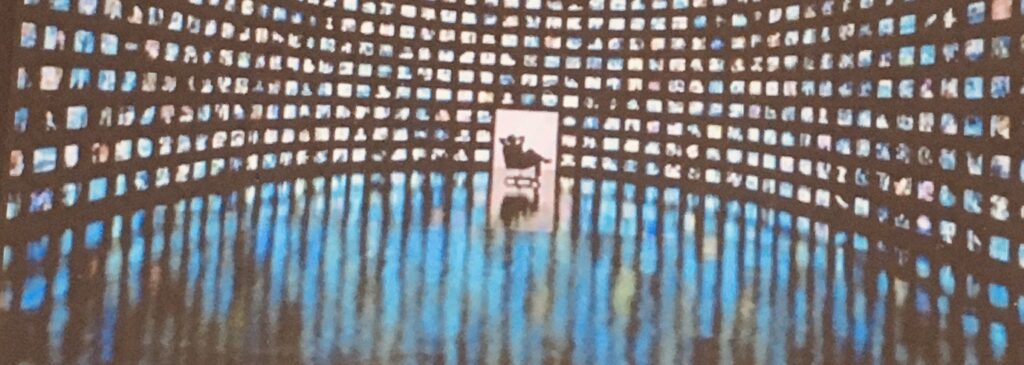
The next presenter pointed out that “over the air” TV is a segment that is overlooked in both local and national levels. The next panel discussed TV series of the 21st century. They emphasized the strategies and insights that can make a difference: the insights that can help the programs stand out in the crowded marketplace. “The globalization of tastes and desires for local consumption.”
During the question and answer session, the current and future shifts in consumer behaviors and the current challenges of cross platform measurement were discussed. In the next session, the focus was on the process of evolving business models of the Cable and Satellite Communications. The compare and contrast between traditional corded subscribers and the current cordless ones were made.

The next speaker analyzed the data driven culture in the media. The presenter talked about AI powered consumer insights and its potential benefits and discussed some case studies. He pointed out that monetization of the content and new revenues can have significant impact on the future innovations.
As Harvard University researchers pointed out the digital age has disrupted the media ecosystem and as the result have facilitated the access to a variety of information. Currently the tech giants focus on building the infrastructure for the users generated contents. Nowadays we witness that digital information stream is not exclusively originated from the traditional newsrooms but from bloggers, influencers, or columnists on Substack or even messages generated by TikTok videos. No doubt there is chaos and sometimes there are serious reliability issues. But the concept can vary according to each person’s perspective; some point of views see liberating elements in each chaos. (C) CTR Press
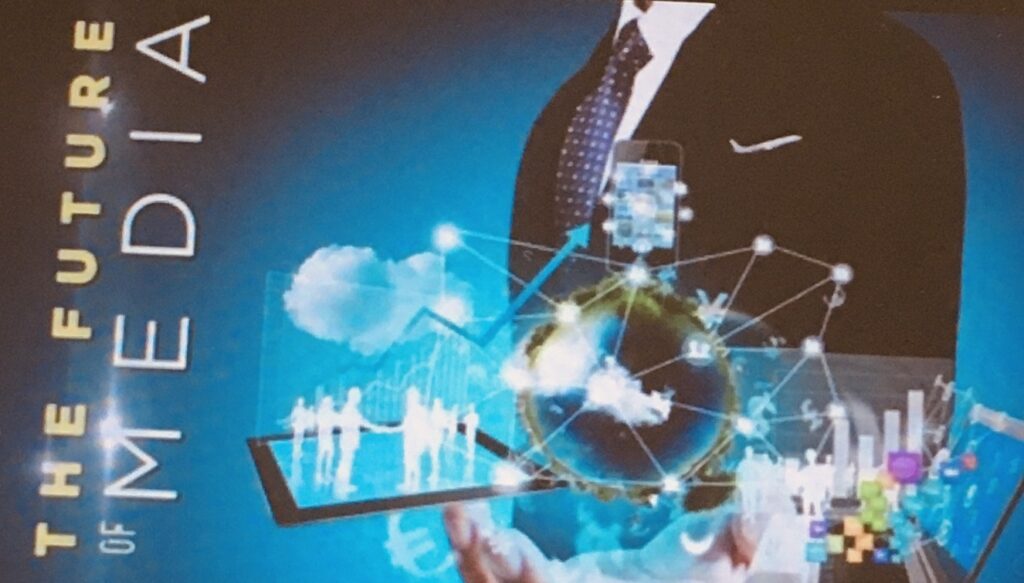
January 2023:
Museo Lapidario Estense
Modena, Italy
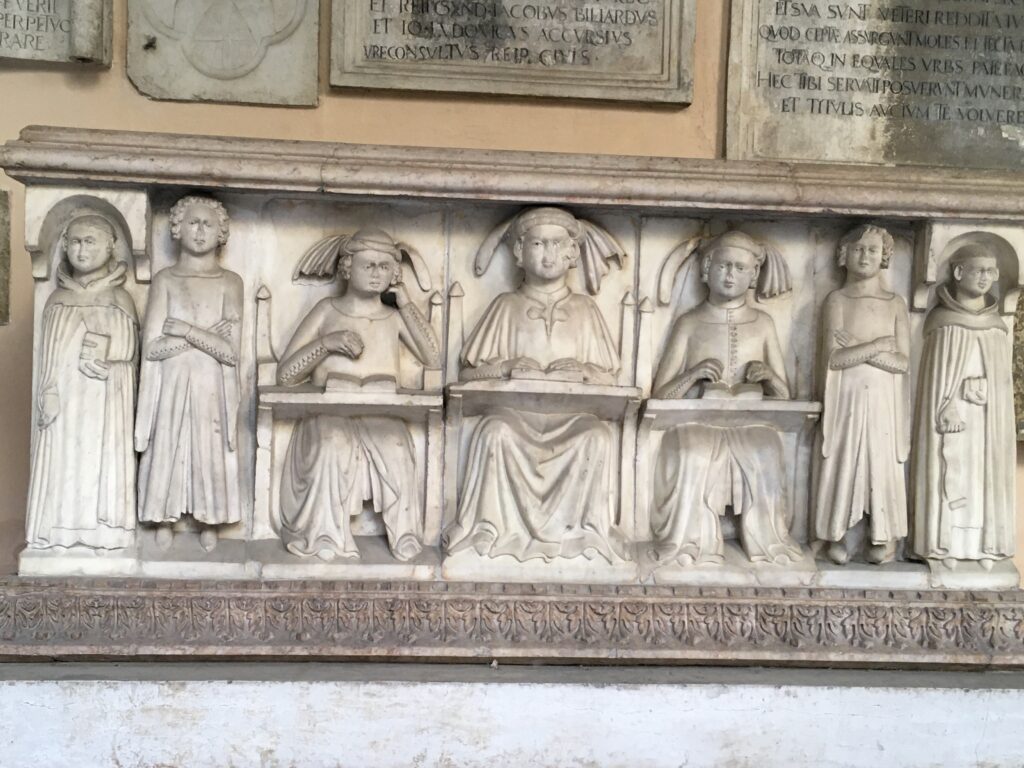
Museo Lapidario Estense is the crown jewel of museums in Modena, Italy. It was founded by Duke Francesco IV as the first public museum in Modena in 1828. The museum collections are unique and includes Roman artifacts, memorial stones and tombs, and some rare paintings and statues. After the unification of Italy, the museum acquired more space and artifacts. This cultural institution is a must-visit destination for all who deeply appreciate cultural heritages.
During the fifteenth century, the innovations of Renaissance appeared in Modena. Bianchi Ferrari was the most important artist in Modena during the fifteenth century. He is cherished as “a perfect painter and a good man”. The following transferred fresco is attributed to Ferrari.
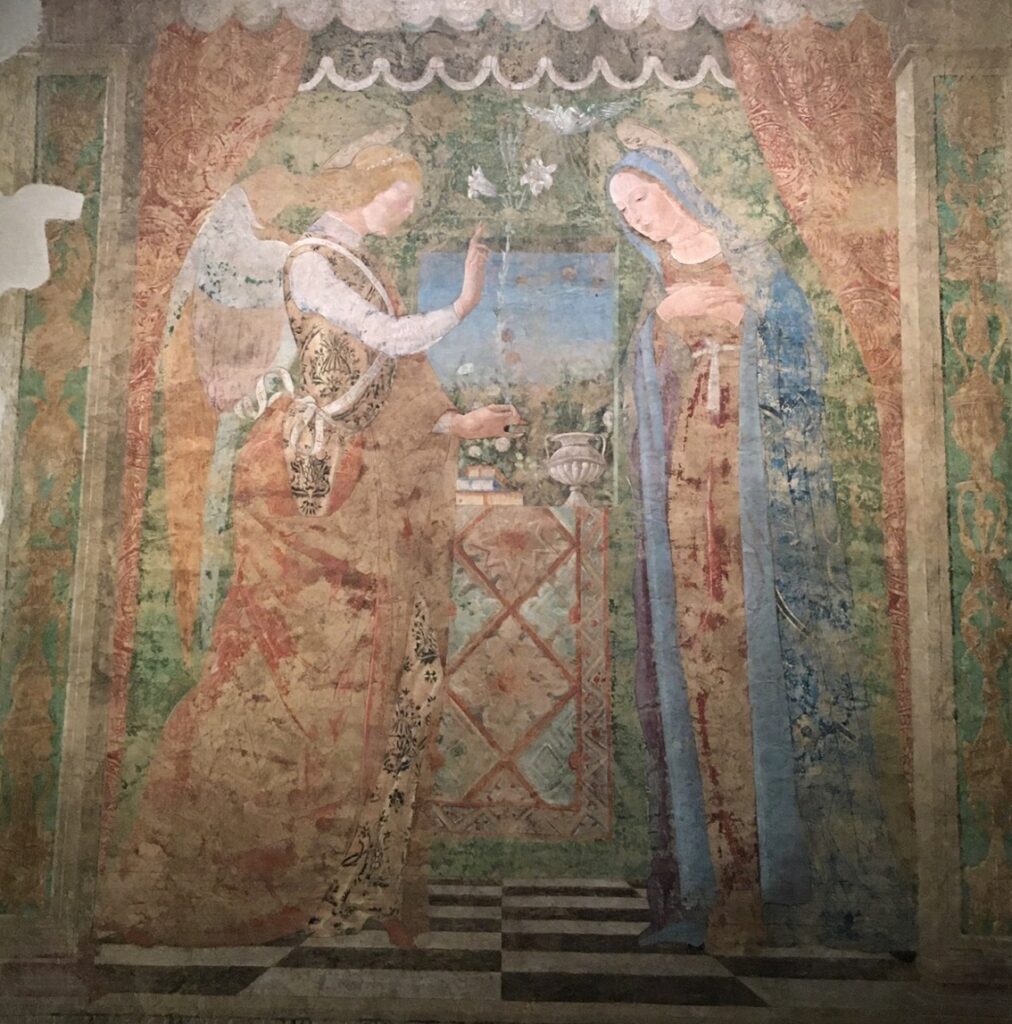
The museum’s visitors have a chance to view the following masterpiece by Dosso Dossi. It was painted in 1518 and depicts Madonna and Child with Saints George and the Archangel Michael. This beautiful and rare painting with extraordinary combination of colors and lights conveying the message from the artist to the viewers of the painting. “This altarpiece strikes a balance between Venetian and Tuscan – Roman paintings.” Dossi was an Italian Renaissance artist who belonged to the School of Ferrara. He often painted mythological figures with dreamlike ambiance of colors and perspective.

A fascinating painting by Leonello Spada, called The Fortune Teller attracts the attention of visitors. Spada painted it in 1616. He was influenced by Caravaggio’s style. It portrays an elegant man who ignores his friend’s advice and accepts his hand to be read by a fortune teller. The fortune teller’s son robs him while he is occupied by the process of fortune telling. Spada used the wit and techniques that was Caravaggio’s style and created this interesting painting.

One of Guido Reni’s masterpieces, The Crucified Christ, painted in 1636 is on display. Guido Reni was one of the most prominent painters in Italy who used to paint religious, allegorical and mythological figures. He was very popular worldwide especially in France; Stendhal used to say that Reni must have had “a French soul”. Many French painters were influenced by his style and his rare talent in portraying the characters with the extraordinary eye expressions.
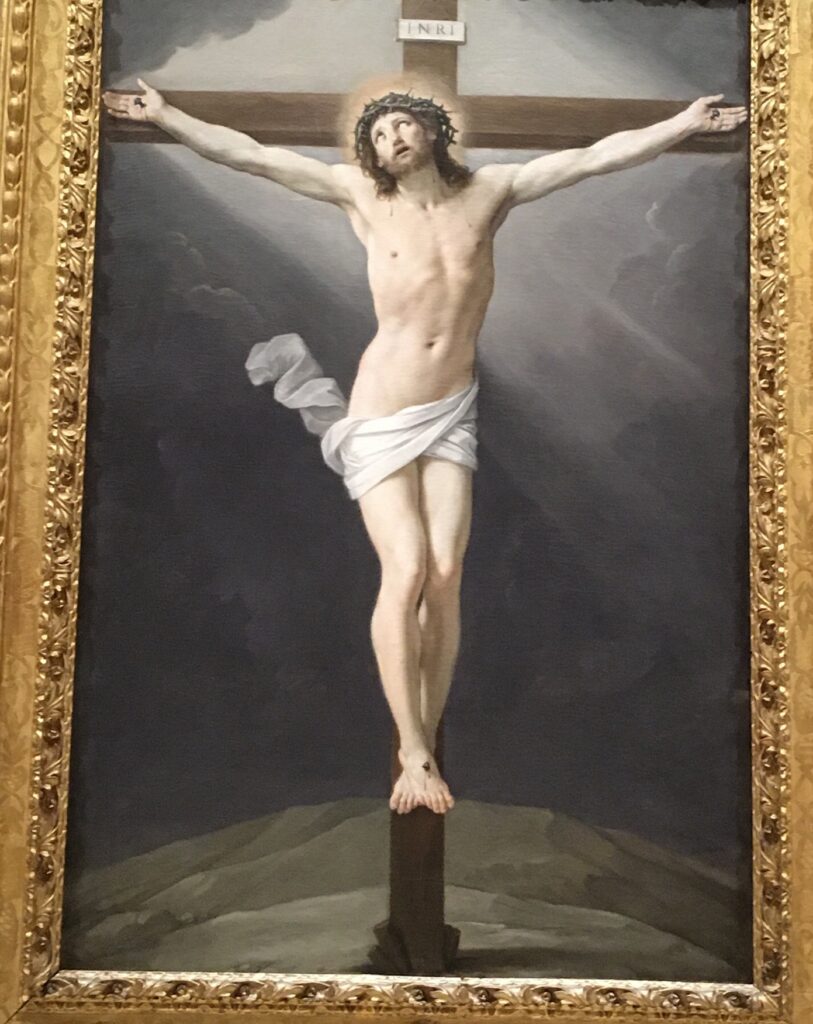
The museum’s visitors have an opportunity to view a variety of rare artifacts. The ambiance is very pleasant and the artifacts are arranged with taste and precision. There are sufficient information about most of the art pieces in two languages: Italian and English. The background information about the specific century that the artifacts were created, the origin and the journey of each piece is very useful and educational for the enthusiastic visitors. (C)CTR Press

